The History of Christmas T-Shirts and Holiday Fashion
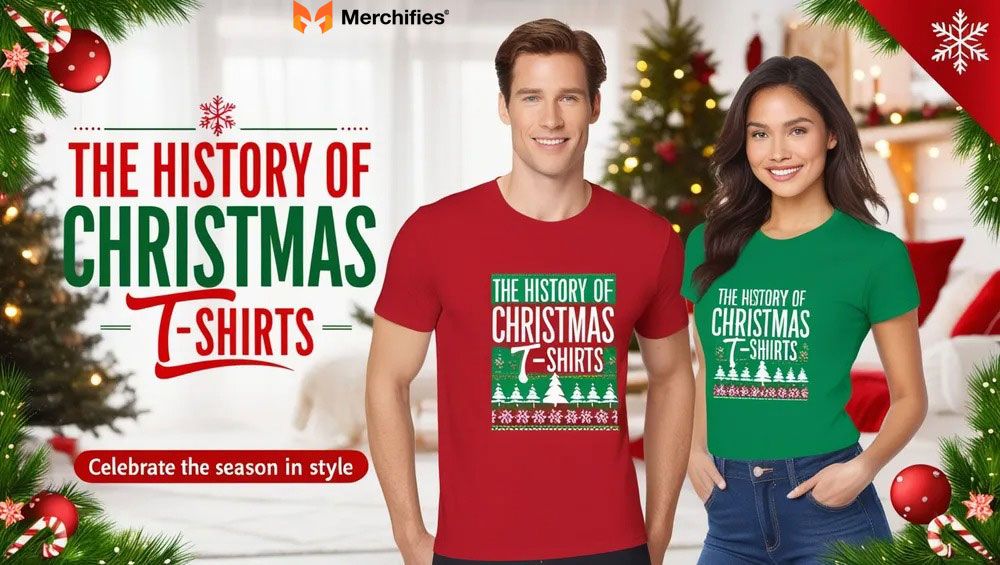
Blog Post Contents
Every December, millions of Americans pull out their favorite Christmas shirts—whether it's an outrageously tacky sweater covered in blinking lights or a simple tee with Santa's face. But have you ever stopped mid-eggnog to wonder how this tradition started? The history of Christmas shirts is far more fascinating than you might think, weaving through centuries of cultural shifts, economic changes, and our collective desire to mark special occasions with what we wear.
I've spent years researching fashion history, and nothing quite compares to the story of how we went from Victorian velvet gowns to "Sleigh My Name" t-shirts. This journey reveals something profound about American culture: our constant negotiation between tradition and rebellion, formality and comfort, conformity and self-expression.
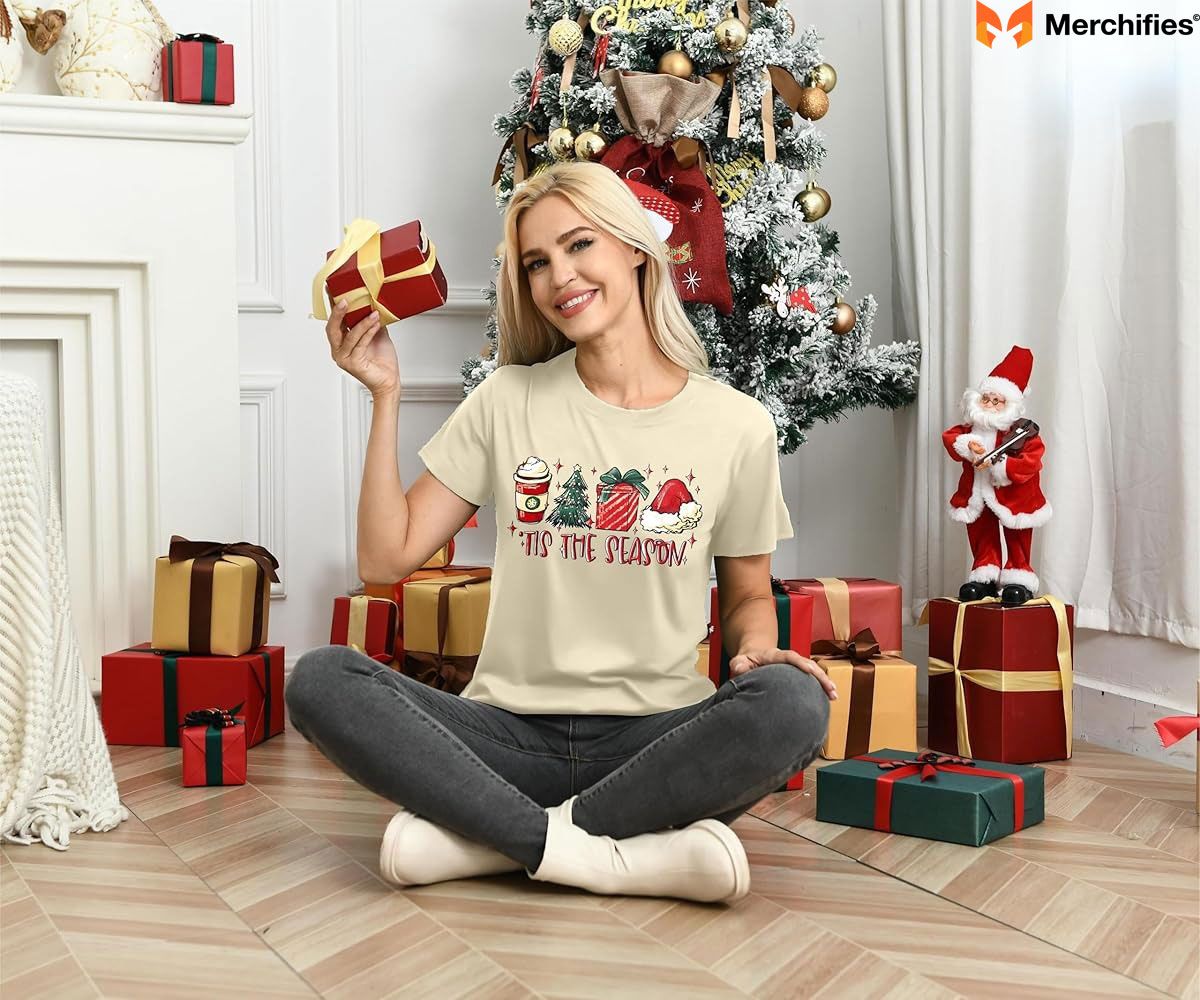
This article explores the complete origin of holiday shirts, tracing their evolution from medieval feast-day attire through the birth of commercial Christmas fashion in the 1980s to today's Instagram-worthy matching family sets. You'll discover how war, technology, social media, and even Coca-Cola shaped what we wear during the most wonderful time of the year. Along the way, I'll share expert insights from fashion historians, psychologists, and real people whose Christmas shirt stories might just mirror your own.
The Ancient Roots: Before Christmas Shirts Existed
Long before anyone printed "Fa La La La La" on a sweatshirt, winter celebrations demanded special clothing. The origin of holiday shirts reaches back thousands of years, though our ancestors wouldn't recognize the connection.
The Romans celebrated Saturnalia in December, a festival where social norms flipped upside down. Slaves wore their masters' clothes, and everyone donned festive garments to honor Saturn, the god of agriculture. Picture togas in rich purples and reds, adorned with laurel wreaths. These weren't everyday clothes—they signaled that ordinary rules didn't apply during celebration time. Sound familiar?
Celtic tribes marked the winter solstice with Yule celebrations, incorporating symbolic colors into their ceremonial dress. Deep green represented the evergreens that survived winter's death grip. Red came from holly berries and the promise of spring's return. White symbolized snow and purity. These color choices weren't random fashion statements. They carried meaning about survival, hope, and the cycle of life.
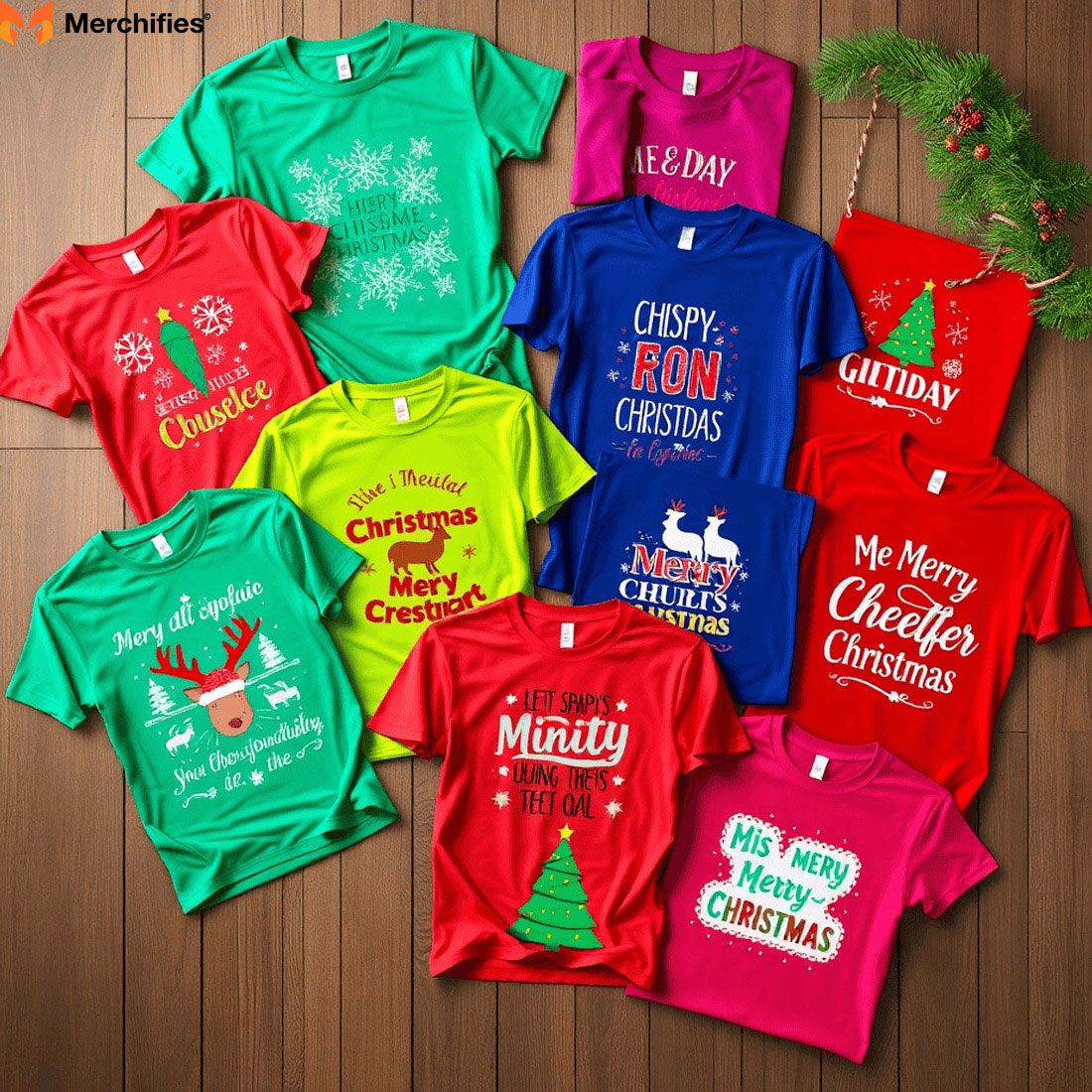
When Christianity spread across Europe, it absorbed many of these pagan traditions. Early Christians didn't celebrate Christmas with special clothing initially. But by the 4th century, as December 25th became officially recognized as Christ's birth, feast day traditions emerged. Church leaders wore elaborate vestments in liturgical colors—red for martyrdom, white for purity, green for growth. Wealthy Christians began wearing their finest clothes to Christmas Mass, establishing a pattern that would endure for centuries: Christmas deserved your best.
Medieval and Renaissance Europeans took this seriously. For most people living in feudal societies, clothing options were limited by both resources and law. Sumptuary laws actually regulated what different classes could wear, restricting certain fabrics and colors to nobility. But Christmas offered a rare exception. Peasants saved their cleanest tunics for Christmas Day. Nobles dressed in elaborate gowns and doublets trimmed with fur and jewels. The holiday became one of the few occasions when everyone, regardless of status, tried to look their absolute best.
This established a powerful cultural pattern: Christmas clothing should be special, different from everyday wear, and signal that something important is happening. That pattern would persist through every subsequent transformation in the history of Christmas shirts, even as "special" evolved from silk brocade to sequined reindeer.
The Victorian Revolution: Birth of Modern Christmas Fashion
If you want to understand where modern Christmas fashion really begins, you need to look at Victorian England. Queen Victoria and Prince Albert didn't just popularize the Christmas tree—they revolutionized the entire holiday, including what people wore.
Before the Victorian era, Christmas had actually fallen out of favor in many places, especially among Protestants who viewed it as too Catholic and rowdy. The Victorians transformed it into a family-centered, sentimental celebration. And families, they decided, should look picture-perfect.
Victorian Christmas fashion was elaborate by today's standards. Women wore crinolines—those massive hoop skirts that required sideways maneuvering through doorways—in rich velvets and silks. Bodices featured intricate lace work. Colors leaned toward deep jewel tones: burgundy, forest green, royal blue. Men donned formal dinner jackets, waistcoats, and cravats. Even children dressed like miniature adults in scaled-down versions of grown-up finery.
The key shift wasn't just the clothes themselves, but what they represented. The Victorians invented Christmas as we know it: gift-giving, family gatherings, special meals, and yes, dressing up for the occasion. Department stores emerged during this period, and they quickly recognized Christmas as a commercial opportunity. Macy's opened in 1858; Marshall Field's in 1852. By the 1870s, these stores created elaborate window displays and entire sections dedicated to holiday shopping.
Mail-order catalogs from Sears and Montgomery Ward brought Christmas fashion to rural America. For the first time, a farmer's wife in Kansas could order the same fashionable Christmas dress that a society lady wore in New York. This democratization of fashion would eventually lead to mass-market Christmas shirts a century later.
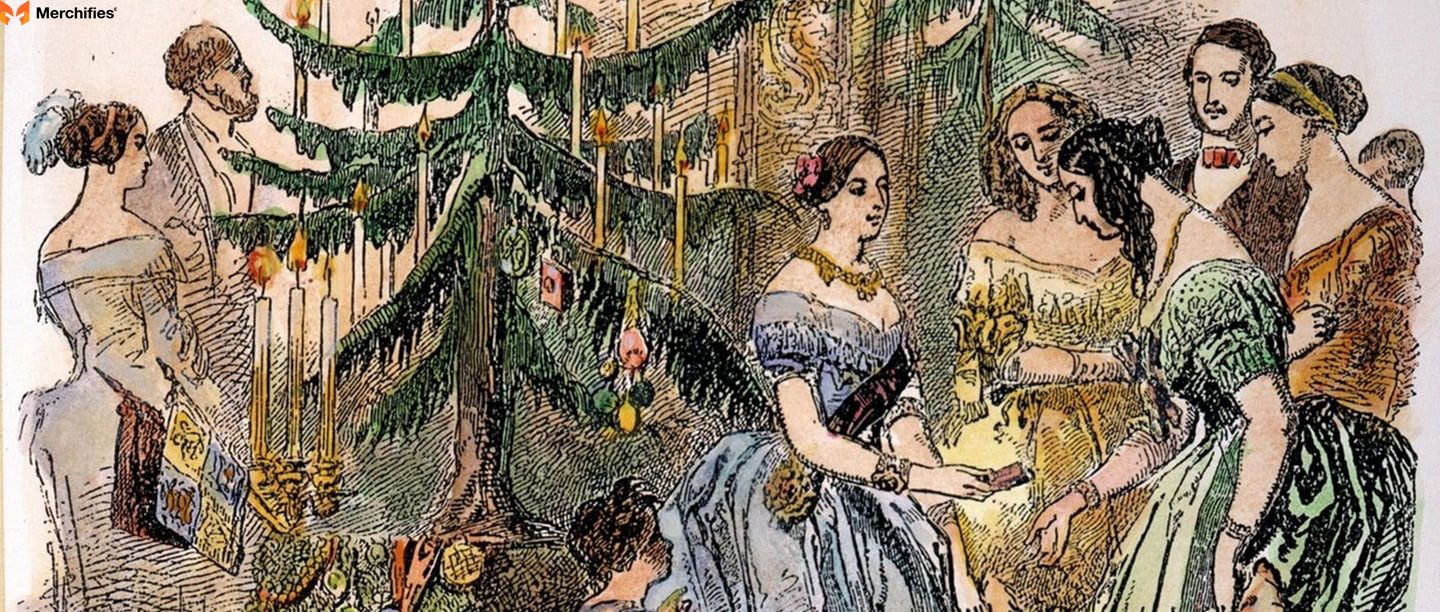
But perhaps the Victorian era's most lasting contribution to Christmas fashion iconography was the standardization of Santa Claus's appearance. The tradition traces back to Bishop Saint Nicholas, who lived in the 4th century in what's now Turkey. Nicholas wore crimson-colored robes befitting his religious office and became legendary for his generosity to poor children.
Dutch settlers brought Sinterklaas traditions to America, but Santa's modern image crystallized through Victorian-era illustrator Thomas Nast. Starting in 1863, Nast drew Santa for Harper's Weekly magazine. His illustrations established Santa's red suit trimmed with white fur, black boots, and jolly demeanor. This became the template that influenced all Christmas fashion that followed. Red and white weren't just colors anymore—they were Christmas itself.
Charles Dickens' "A Christmas Carol," published in 1843, also shaped Victorian Christmas culture profoundly. The story emphasized redemption, charity, and family togetherness. Dickens described the Cratchit family in their modest but clean Christmas clothes, and Scrooge's transformation included him buying Bob Cratchit's son a new outfit. The message was clear: Christmas required effort in your appearance, even if you couldn't afford much.
This Victorian blueprint—special clothing, family focus, commercial opportunity, color symbolism—established the foundation for everything that came after in Christmas fashion history.
Early 20th Century: The Foundation Years (1900-1950)
The early 1900s saw Christmas fashion evolve through massive social changes: world wars, economic depression, and the rise of consumer culture. Each decade left its mark on how Americans dressed for the holidays.
The Roaring Twenties: Jazz Age Christmas
The 1920s exploded with rebellion against Victorian stuffiness. Young women became "flappers," chopping their hair into bobs and raising hemlines to shocking levels. Christmas parties in the Jazz Age were sophisticated affairs, often held in speakeasies where illegal cocktails flowed freely.
Women's Christmas fashion embraced the flapper aesthetic: dropped waistlines that hung loose rather than cinching, elaborate beadwork catching light on the dance floor, and sequins everywhere. Dresses often featured fringe that swayed with the Charleston's energetic movements. The silhouette was boyish and liberating compared to Victorian corsets and crinolines.
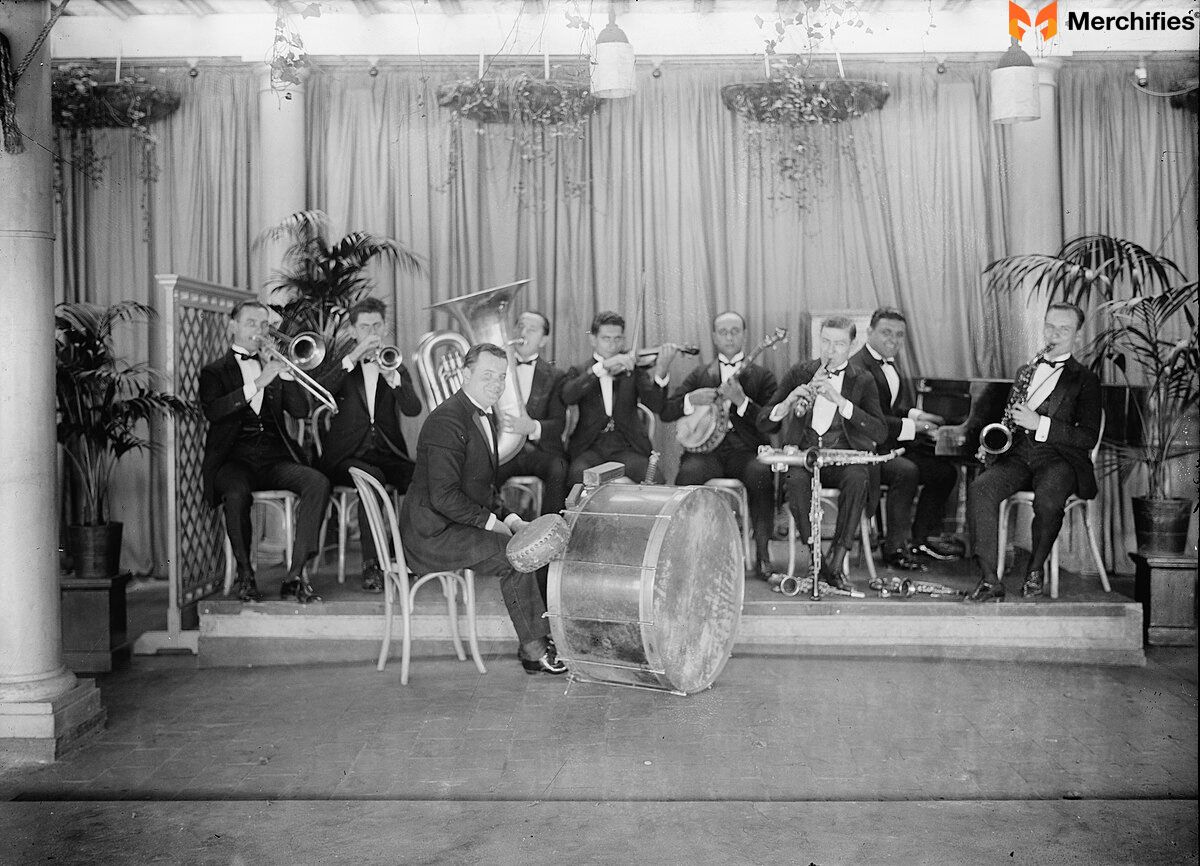
Men wore three-piece suits with wide lapels and bow ties. The Art Deco movement influenced everything from architecture to fashion, bringing geometric patterns and bold colors to holiday attire. Christmas parties became social events where the young and wealthy showed off their modern sensibilities.
This era established Christmas as a time for parties and celebration beyond just family dinners. What you wore signaled your social sophistication. The seeds of "Christmas party outfit" as a distinct category were planted, though they wouldn't fully bloom for decades.
The Great Depression: Making Do with Hope
Then came 1929, and everything changed. The stock market crash and subsequent Great Depression made elaborate Christmas fashion impossible for most Americans. Families struggled to put food on the table, let alone buy new clothes for the holidays.
Yet something remarkable happened in 1931 that would forever change Christmas imagery. The Coca-Cola Company commissioned illustrator Haddon Sundblom to create Santa Claus advertisements. Sundblom's Santa built on Thomas Nast's foundation but made him more human, more approachable, more real. Dressed in Coca-Cola red and white, this jolly, round-faced Santa appeared in magazines and billboards across America.
Sundblom continued painting Santa for Coca-Cola until 1964, and his images became the definitive Santa look. During the Depression's darkest years, this cheerful figure in his red suit represented hope. If Santa could still be jolly, maybe things would get better.
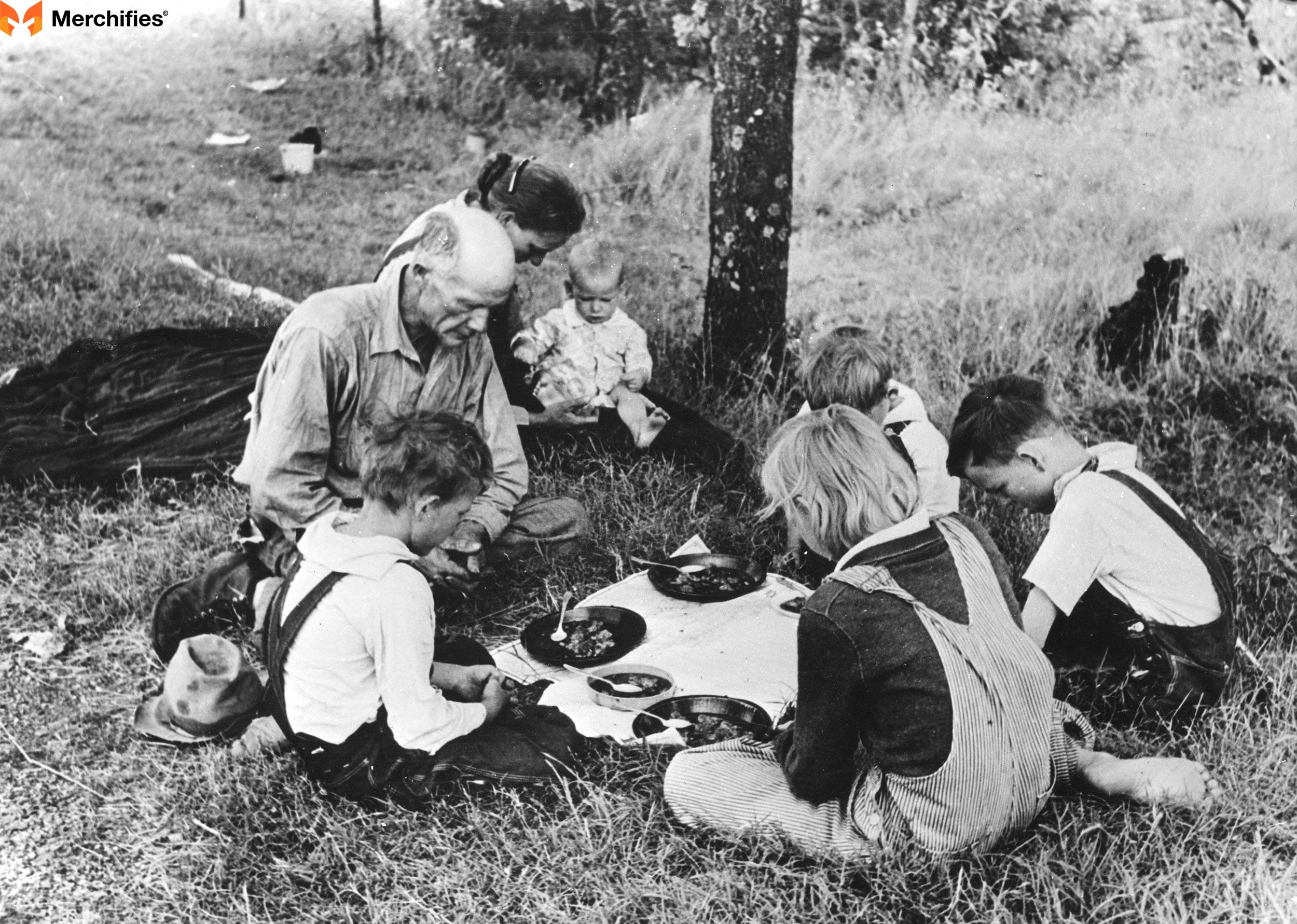
Practical Christmas fashion during the 1930s meant making do. Women sewed Christmas outfits at home using whatever fabric they could afford or repurpose. The "make it last" mentality dominated. A dress might be worn for several Christmases, carefully mended and updated with new collars or buttons. Hand-knit sweaters became treasured gifts because they represented hours of labor and love.
This scarcity created its own aesthetic: modest but carefully maintained clothing that showed respect for the holiday despite hard circumstances. My grandmother told me about her one "good dress" that she wore to church every Christmas throughout the 1930s. Her mother would wash and press it the night before, and wearing it made her feel special even when presents under the tree were sparse.
World War II: Wartime Christmas (1940s)
The 1940s brought new challenges as America entered World War II. The government implemented fabric rationing as part of the war effort. The War Production Board issued Regulation L-85 in 1942, restricting the amount of fabric that could be used in clothing. Hemlines rose to save material. Ornate details disappeared. Practical became patriotic.
Women's Christmas fashion featured "utility dresses"—simple, straight-cut garments with shorter hemlines and minimal embellishment. Fabric rationing meant you couldn't waste material on full skirts or fancy trim. The "Make Do and Mend" campaign encouraged women to repurpose old clothes and repair rather than replace.
Accessories became crucial for adding festive flair without consuming precious fabric. A brooch pinned to a plain dress collar signaled effort and celebration. Scarves in Christmas colors transformed everyday outfits into holiday attire. Women got creative, sometimes using parachute silk from practice jumps to sew special occasion clothes.
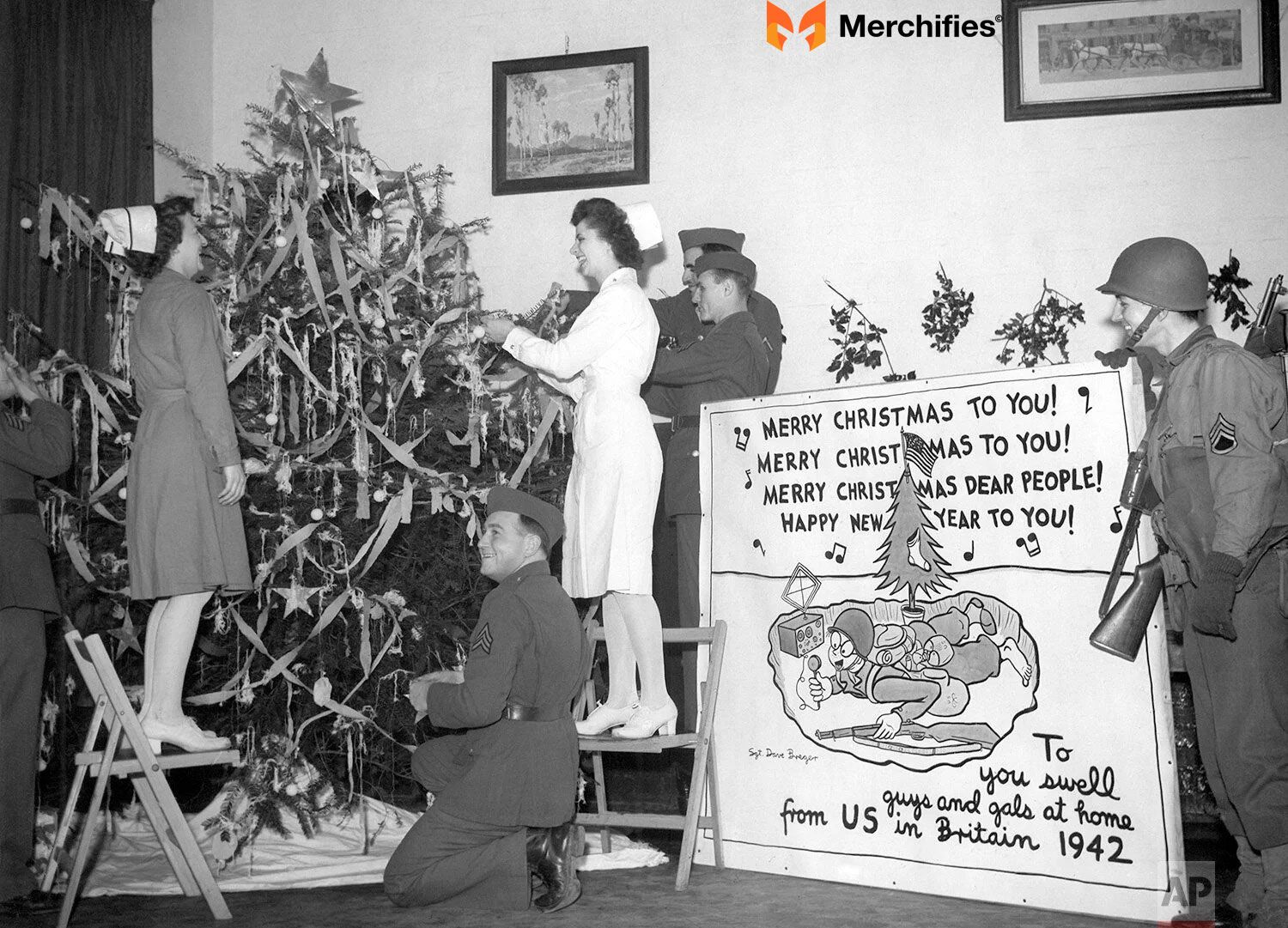
For millions of American families, Christmas during the war years meant someone's absence. Service members' uniforms—Army khaki, Navy blue, Marine Corps green—appeared in Christmas photos and church pews. The Red Cross organized Christmas fashion shows on military bases to boost morale, featuring designs made from minimal fabric that complied with rationing rules.
Despite hardships, or perhaps because of them, Americans maintained Christmas traditions. Dressing up for the holiday represented normalcy and hope for peace. Women working in factories—Rosie the Riveter and her real-life counterparts—still made effort to look nice for Christmas, even if that meant adding a red ribbon to work overalls.
The war taught Americans that Christmas spirit didn't require elaborate outfits. This lesson would influence the gradual shift toward more casual holiday fashion in coming decades.
Post-War Boom: Return to Glamour (Late 1940s-1950s)
When the war ended, pent-up desire for beauty and abundance exploded. In 1947, Christian Dior introduced his "New Look" collection in Paris, featuring nipped waists, full skirts, and an ultra-feminine silhouette that used yards of fabric. American women embraced this return to glamour enthusiastically.
Christmas fashion in the 1950s epitomized postwar optimism. Women wore dresses with cinched waists emphasizing hourglass figures, full skirts held out by crinolines and petticoats, and pearl necklaces that became the decade's signature accessory. Colors were bold: Christmas red, emerald green, in polka dots and plaid patterns.
Men's Christmas fashion became "casually sophisticated." The sweater vest emerged as the perfect holiday look when paired with slacks and a tie. This was less formal than the suits of previous decades but still showed effort. The suburban ideal promoted in TV shows like "Father Knows Best" and "Leave It to Beaver" influenced Christmas aesthetics: families gathered around trees in their well-coordinated, picture-perfect outfits.
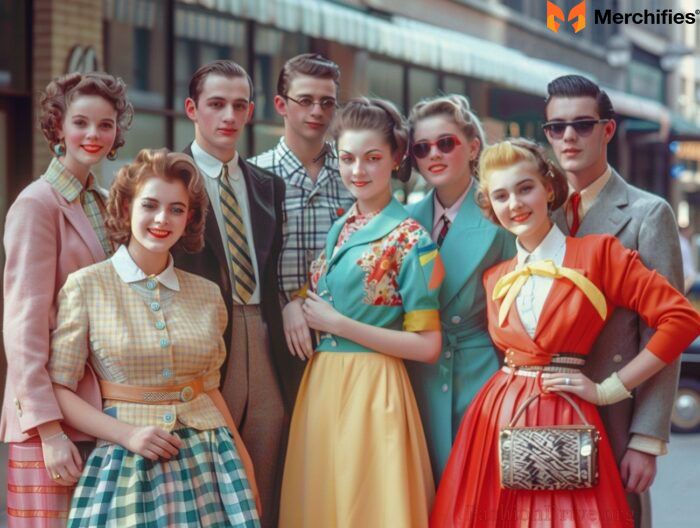
Television changed everything about American culture, including Christmas. Holiday specials showed families in their Christmas best. Department stores advertised holiday fashions during commercial breaks. The visual medium made appearance more important than ever before.
I've interviewed several people who grew up in the 1950s, and they all remember Christmas as formal. "We dressed up for Christmas morning," one woman told me. "Mother insisted we put on our nice clothes before opening presents, and we took family photos that she sent with Christmas cards. My father wore a tie. On Christmas Day."
This formality represented postwar prosperity and traditional family values. Christmas fashion wasn't just about looking good—it demonstrated that your family had achieved the American dream. The white picket fence came with coordinated Christmas outfits.
The Birth of Casual Christmas Wear (1960s-1970s)
The 1960s brought cultural revolution, and Christmas fashion couldn't escape the upheaval. Young people rejected their parents' formality, embracing new styles that shocked the older generation. This decade planted the seeds for casual Christmas wear that would eventually blossom into the Christmas t-shirt phenomenon.
The Swinging Sixties: Mod Fashion Meets Christmas
The 1960s split into distinct fashion movements. Early in the decade, First Lady Jackie Kennedy's pillbox hats and sophisticated suits influenced mainstream Christmas fashion. Women still dressed up, but with a modern, streamlined aesthetic.
Then came the British Invasion—not just in music but fashion. Mod style from London's Carnaby Street invaded American closets. For Christmas parties, young women wore mini skirts that would have horrified their mothers, geometric patterns in bold colors, go-go boots that climbed past the knee, and metallic fabrics that looked futuristic.
Mary Quant, the British designer who popularized the miniskirt, created what she called "a democratic fashion" that young women could afford. This accessibility would become crucial to Christmas fashion's evolution. If everyone could participate in current trends, holiday fashion became less about signaling wealth and more about expressing personality.
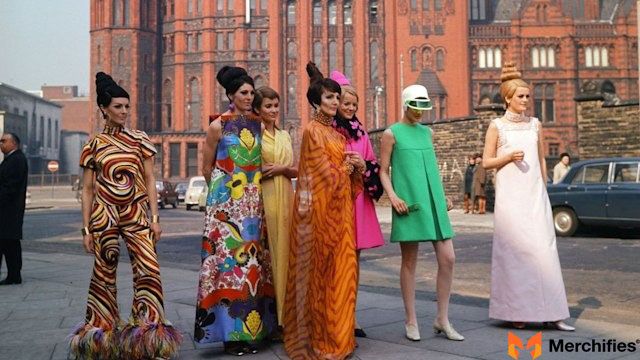
Men's fashion followed the "Mad Men" aesthetic: slim-cut suits, skinny ties, and a polished but youthful look. As the decade progressed, however, male fashion grew more adventurous with Nehru jackets, turtlenecks, and eventually, by decade's end, bell-bottoms.
The counterculture movement rejected materialism and conventional dress codes. Hippies wore tie-dye, fringe, and ethnic-inspired clothing. While many Americans still dressed traditionally for Christmas, youth culture established that questioning conventions was acceptable. This rebellion against formality would accelerate in coming decades.
Meanwhile, something interesting was happening with sweaters. Grandmothers and crafty relatives began knitting Christmas-themed sweaters as gifts. These weren't ugly yet—they were heartfelt, handmade presents featuring reindeer, snowflakes, and Christmas trees. Recipients wore them politely, not realizing these sweaters would become ironic fashion statements decades later.
The Disco Era: Glittering Holidays (1970s)
The 1970s took Christmas fashion in two contradictory directions: over-the-top glamour for parties and radical casualization for family gatherings. This split revealed Americans' ambivalence about formality that continues today.
Disco culture dominated the party scene. John Travolta's white suit in "Saturday Night Fever" (1977) became iconic, but for Christmas parties, people went even bigger. Sequins covered everything—dresses, shirts, even pants. Metallic fabrics in gold and silver mixed with traditional Christmas red and green. Platform shoes added height. Women wore wrap dresses popularized by Diane von Furstenberg, jumpsuits that went from Studio 54 to Christmas Eve mass, and high-waisted flared pants with dressy blouses.
Men embraced wide-collared shirts, often in polyester prints that seem wild by today's standards. Velvet blazers in burgundy or forest green became the go-to Christmas party look. Bell-bottoms swished as people danced to the Bee Gees. Hair grew longer, mustaches thicker, and Christmas fashion more flamboyant than ever before.
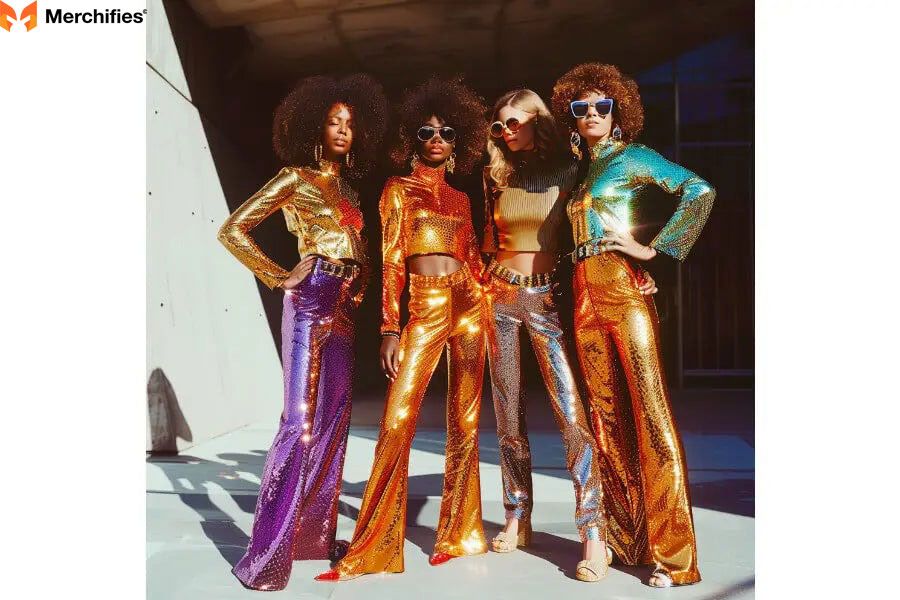
But at home, the 1970s saw Americans dressing down. The casual Friday concept began spreading through corporate America, and its influence reached family Christmas gatherings. More families opted for comfortable clothes rather than formal attire when opening presents at home.
This decade also saw the rise of the t-shirt as a legitimate piece of everyday fashion, not just underwear. T-shirts had been transitioning since the 1960s, when they became associated with rebels like James Dean and Marlon Brando. By the 1970s, graphic t-shirts featuring band logos, political slogans, and pop culture references were everywhere.
Screen printing technology improved dramatically, making custom t-shirt printing affordable for small businesses. This technological advancement would prove crucial to the birth of Christmas shirts a decade later. The infrastructure was being built, waiting for someone to realize that holiday graphics belonged on t-shirts too.
The 1970s established that Christmas fashion could be casual or glamorous depending on context—a flexibility that defines our current approach to holiday dressing.
The Christmas T-Shirt Era Begins (1980s-1990s)
The 1980s changed everything. This decade saw the actual birth of Christmas shirts as we know them today, marking a decisive shift in the history of Christmas shirts from formal holiday attire to casual, often humorous, self-expression.
The Extravagant Eighties: Ugly Gets Celebrated
The 1980s embraced excess in every aspect of culture, and Christmas fashion was no exception. "Greed is good" wasn't just a movie quote—it was a lifestyle. But while Wall Street types wore power suits to office Christmas parties, something unexpected was happening at more casual gatherings.
The "ugly Christmas sweater" was born, though it didn't carry that name yet. Grandmothers and crafty aunts knitted elaborate sweaters featuring enormous reindeer faces, Christmas trees decorated with actual pom-pom ornaments sewn on, and Santa Claus figures that covered the entire chest and belly. These hand-knit creations were genuinely ugly by fashion standards: garish color combinations, oversized motifs, bulky fits that swallowed the wearer.
Initially, people wore these sweaters out of obligation. Your grandmother spent hours knitting this monstrosity—you wore it to Christmas dinner, smiled through the family photos, then stuffed it in the back of your closet. But something shifted mid-decade. The irony culture that would fully bloom in the 1990s began emerging. Suddenly, wearing the ugliest Christmas sweater became funny. A competition emerged: whose holiday sweater was most outrageous?
Commercial retailers noticed and started producing deliberately over-the-top Christmas sweaters. These weren't carefully knitted with love—they were mass-produced with intentionally gaudy designs. Department stores devoted sections to them. The ugly Christmas sweater became a thing, a cultural phenomenon that continues today.
But the real revolution in Christmas fashion came from a different garment: the t-shirt. The 1980s saw the first commercial Christmas t-shirts appear in mall kiosks and department stores. These early designs were simple—candy canes, Christmas trees, "Merry Christmas" in festive fonts. Nothing fancy, but they represented a radical departure from decades of dressing up for the holidays.

Screen printing technology had advanced to the point where small businesses could affordably produce custom shirts in small batches. This allowed for more creativity and variety than ever before. Suddenly, you could find Christmas shirts featuring your favorite cartoon characters, sports teams, or hobbies combined with holiday themes.
The 1980s mall culture facilitated this. Teenagers and young adults spent weekends at malls, where temporary kiosks sold novelty Christmas shirts alongside more traditional department store offerings. The casual style of Christmas shirts appealed to younger generations tired of formal holiday attire.
Athletic wear influence also shaped 1980s Christmas fashion. Sweatshirts with Christmas graphics became popular, combining the comfort of workout gear with festive designs. The boundary between gym clothes and street clothes was blurring, and Christmas fashion reflected this casualization.
Pop culture references started appearing on Christmas shirts too. Characters from popular TV shows and movies got holiday makeovers. This trend would accelerate dramatically in the 1990s and beyond, but it began in the 1980s as intellectual property owners realized holiday merchandise was profitable.
One fashion historian I interviewed noted, "The 1980s was when we stopped asking 'should this be worn for Christmas?' and started asking 'why not?' That permission to be casual and playful fundamentally changed holiday fashion."
National Lampoon's "Christmas Vacation" premiered in 1989, and Chevy Chase's character embodied this shift. His wardrobes mixed casual and absurd—the dickey shirt under a sweater, the moose mug, the lights that wouldn't work. The movie celebrated Christmas enthusiasm while mocking overblown formality. It captured the moment perfectly.
The Grunge Nineties: Irony and Thrift Stores
The 1990s took the casualization of Christmas fashion even further. Grunge culture, emerging from Seattle with bands like Nirvana and Pearl Jam, rejected the 1980s' flashy excess. Flannel shirts, ripped jeans, and combat boots became the uniform of youth culture. This aesthetic inevitably influenced Christmas fashion.
For the first time, deliberately dressing down for Christmas became not just acceptable but cool. The formality that my grandmother's generation insisted upon was increasingly seen as outdated, even stuffy. "Come as you are," Nirvana sang, and people took that attitude to Christmas gatherings.
But the 1990s also saw Christmas t-shirts explode in popularity and creativity. While some people dressed down in regular grunge wear, others embraced Christmas shirts with ironic enthusiasm. Thrift stores became treasure troves for vintage holiday sweaters and shirts. Wearing something old and weird from Goodwill was cooler than buying new.
This thrift store aesthetic aligned with Generation X's skepticism toward consumer culture. Why buy a new Christmas shirt when you could find an authentically tacky one from 1972 for three dollars? Vintage Christmas fashion became its own trend, separate from both formal dress-up and casual dress-down approaches.
The humor on Christmas shirts evolved significantly during the 1990s. Earlier Christmas shirts had been cheerful and straightforward: Santa, snowmen, "Happy Holidays." Nineties Christmas shirts got sarcastic. Designs referenced dysfunctional families, holiday stress, and alcohol consumption. "I'm only here for the presents" wasn't just a thought—it was a t-shirt slogan.
This reflected broader cultural shifts toward irony and cynicism. The idealistic baby boomers were raising Generation X kids who questioned everything, including whether Christmas required reverence. Christmas shirts became a way to participate in the holiday while maintaining emotional distance through humor.
Pop culture references on Christmas shirts became more sophisticated and specific. Instead of just "Santa," you might see Santa parodying a famous movie scene. Instead of generic Christmas trees, designs incorporated elements from TV shows, video games, or internet memes (as the internet became more prevalent toward decade's end).
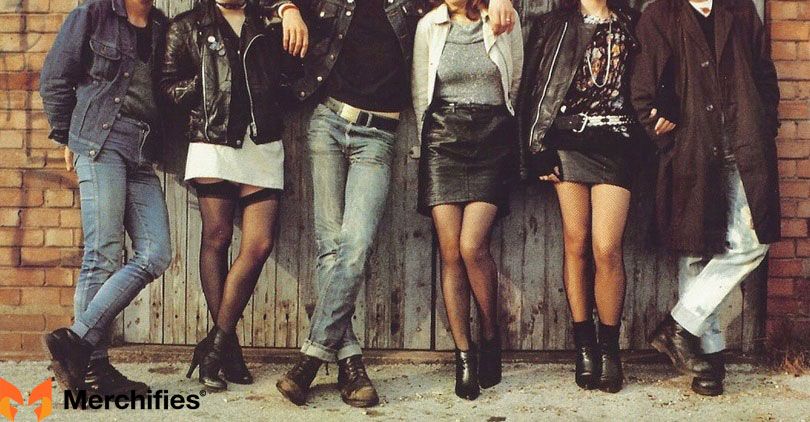
Computer graphics and digital printing improved dramatically during the 1990s. Earlier Christmas shirts had been limited to relatively simple designs due to screen printing constraints. Digital printing allowed for complex, full-color images with photographic quality. This opened creative possibilities that designers eagerly exploited.
The late 1990s saw the internet begin changing commerce and culture. Amazon launched in 1994 (initially selling books, but expansion came quickly). By decade's end, people could buy Christmas shirts online, accessing designs from around the world rather than being limited to local stores. This global marketplace would explode in the 2000s, but the foundation was laid.
A small business owner I interviewed remembered starting her Christmas shirt company in 1997: "I bought a heat press and designed shirts at home on my Gateway computer. My first year, I sold maybe thirty shirts to family and friends. By 2000, I had a website and was shipping orders nationally. The internet made it possible for anyone to become a Christmas shirt designer."
The 1990s also saw matching family Christmas shirts become more common, though this trend would accelerate later. The impulse toward coordinated family photos for Christmas cards drove this. If everyone wore the same or coordinating Christmas shirts, photos looked more unified and festive.
By the decade's end, Christmas shirts had firmly established themselves in American culture. No longer a novelty or rebellion against formality, they were simply one valid option among many for holiday dressing. The origin of holiday shirts as mainstream casual wear was complete.
The Digital Age Explosion (2000s-2010s)
The 2000s and 2010s represented the golden age of Christmas shirts. E-commerce, social media, and print-on-demand technology combined to create an explosion of designs, styles, and Christmas fashion trends that made previous decades look quaint by comparison.
Early 2000s: E-Commerce Changes Everything
The early 2000s saw online shopping transform from novelty to necessity. Amazon expanded beyond books to sell everything, including extensive Christmas apparel sections. Other online retailers emerged, specializing in holiday merchandise.
But the real game-changer was custom printing websites. CafePress launched in 1999 and exploded in popularity during the 2000s. Suddenly, anyone could upload a design and sell Christmas shirts without holding inventory or buying printing equipment. Zazzle followed with similar services. The barrier to entry for Christmas shirt creation dropped to nearly zero.
This democratization meant an unprecedented variety of designs. Want a Christmas shirt featuring your obscure hobby? Someone had made it. Looking for your profession combined with holiday themes? Teachers, nurses, engineers, plumbers—every occupation got Christmas shirt representation. The long tail of niche interests could finally be served profitably.
"Ugly Christmas sweater parties" became an officially named phenomenon in the early 2000s. What had been informal in the 1980s and 90s became organized events with rules and competitions. People scoured thrift stores and eBay for the most outrageous vintage Christmas sweaters. When vintage supplies ran short, manufacturers began producing new "vintage-style" ugly Christmas sweaters, which was delightfully ironic.

Reality TV influenced fashion generally and Christmas fashion specifically. Shows like "The Omarosa Factor" and various "Real Housewives" franchises featured over-the-top Christmas episodes where elaborate outfits competed for attention. This filtered down to regular people, who felt permission to go bigger and bolder with their Christmas fashion choices.
Pop culture references on Christmas shirts became increasingly specific. "Elf," starring Will Ferrell, premiered in 2003 and instantly became a modern Christmas classic. Within months, "Son of a Nutcracker" appeared on t-shirts. "Love Actually" (also 2003) spawned countless romantic Christmas designs. Movie studios recognized Christmas merchandise opportunities and licensed their properties aggressively.
The mid-2000s saw social media emerge. Facebook launched in 2004 (initially for college students, expanding publicly in 2006). Twitter started in 2006. These platforms fundamentally changed how people shared their lives, including what they wore for Christmas. Suddenly, your Christmas outfit wasn't just for family—it was for your entire social network.
Late 2000s to Early 2010s: Social Media and Visual Platforms
Instagram and Pinterest both launched in 2010, and their impact on Christmas fashion cannot be overstated. These visual-first platforms made sharing photos easy and culturally expected. Christmas outfit photos became an annual tradition for millions of users.
Hashtags organized this chaos: #ChristmasShirt, #UglyChristmasSweater, #HolidayFashion, #ChristmasOutfit. You could browse thousands of examples, finding inspiration and purchasing information. Influencers emerged whose primary content revolved around seasonal fashion, including extensive Christmas coverage.
This visibility drove demand for ever-more-creative Christmas shirts. It wasn't enough to have a shirt with Santa anymore. Your Christmas shirt needed to be unique, Instagram-worthy, generating likes and comments. This pressure pushed designers toward more sophisticated, artistic designs.
Print-on-demand technology improved significantly. Direct-to-garment (DTG) printing allowed for full-color designs with photographic quality on t-shirts at reasonable costs. This wasn't your father's screen printing—these were wearable art pieces. Designs could incorporate subtle gradients, detailed illustrations, and complex compositions that would have been impossible or prohibitively expensive a decade earlier.
The customization boom accelerated. Websites let you upload family photos, add names, and create truly personalized Christmas shirts. The matching family Christmas shirt trend exploded. Families coordinated elaborate photo shoots—sometimes hiring professional photographers—with everyone in matching or coordinating holiday shirts.
Etsy, founded in 2005 but hitting mainstream popularity in the early 2010s, became a marketplace for independent Christmas shirt designers. Small businesses and crafters could reach national audiences. This competition pushed creativity even higher. If you searched "Christmas shirt" on Etsy in 2015, you'd find thousands of unique designs from individual creators worldwide.
The humor on Christmas shirts evolved from sarcastic to downright clever. Designers created multilayered jokes that rewarded careful reading. References to drinking culture became ubiquitous: "Sleigh my name," "Jingle juice," "Resting Grinch face," "All I want for Christmas is a nap." These shirts acknowledged that Christmas can be stressful and exhausting, using humor as coping mechanism.

Meme culture began influencing Christmas shirt designs heavily. Internet jokes that went viral appeared on shirts within days. The speed from meme creation to merchandise was unprecedented. Some Christmas shirts made no sense unless you were very online, creating in-group signaling opportunities.
Netflix began producing original Christmas movies in the 2010s, creating new pop culture touchstones. The "Hallmark Christmas movie" aesthetic became its own genre and merchandise category. Christmas shirts parodied the formulaic plots: city woman returning to small hometown, always including romance and career choices resolved by Christmas Eve.
Technology integration started appearing on Christmas shirts. LED lights woven into designs that blinked or changed patterns. QR codes printed on shirts that linked to playlists or videos when scanned. Augmented reality designs that came to life when viewed through smartphone apps. Christmas shirts were getting legitimately high-tech.
The market grew enormous. Industry analysts estimated holiday apparel as a multi-billion dollar business by the mid-2010s. Major retailers like Target and Walmart dedicated significant floor space to Christmas shirts. Fast fashion brands like H&M and Forever 21 released Christmas collections. What had started as a niche novelty had become mainstream commerce.
A marketing professor I spoke with noted, "Social media didn't just change how Christmas shirts were marketed—it changed why people bought them. The shirt became a prop for content creation. People weren't just wearing it to a party; they were photographing it for Instagram. That shift toward performative fashion changed everything."
Modern Christmas Shirt Culture (2020-Present)
The 2020s brought unprecedented challenges and changes to Christmas fashion, accelerating trends that had been building for years while introducing entirely new dynamics. The COVID-19 pandemic, social justice movements, and continued technological advancement all left their marks on the history of Christmas shirts.
The Pandemic Effect (2020-2021)
When COVID-19 forced much of America into lockdown in March 2020, no one knew how it would affect Christmas that year. As December approached, it became clear that traditional gatherings would be limited or canceled entirely. Many families celebrated Christmas over Zoom and FaceTime instead of in person.
This created bizarre fashion dynamics. People needed to look festive on camera but only from the chest up. "Zoom-appropriate" became a fashion consideration. Christmas shirts were perfect—festive and visible on video calls, but you could wear pajama pants below the camera frame. Comfort mattered more than ever since people weren't leaving home.
The pandemic accelerated the casualization of everything, including Christmas fashion. If you couldn't go anywhere, why dress up? Yet people still craved holiday normalcy. Christmas shirts provided that balance: festive enough to mark the occasion, comfortable enough for a day spent entirely at home.
Online shopping dominated completely. Physical retail stores faced capacity limits and health concerns. E-commerce for Christmas shirts surged. Small businesses that had developed online sales channels survived; those that hadn't struggled or failed.

Family matching shirts became more popular, perhaps because coordinated photos provided evidence that families remained connected despite physical distancing. Many families took outdoor photos in matching Christmas shirts, then shared them digitally with relatives they couldn't visit in person.
The pandemic also saw a boom in hobby-based Christmas shirts as people took up new activities during lockdown. Sourdough baking became a meme and then a t-shirt design theme. Home fitness, crafts, gardening—whatever people did to stay sane appeared on Christmas shirts.
Current Trends (2022-2025)
As the pandemic's acute phase passed, several Christmas fashion trends emerged stronger than before. The history of Christmas shirts in this current era reflects broader cultural conversations about inclusivity, sustainability, and authenticity.
Inclusivity and diversity became central to Christmas shirt design. The industry recognized that not everyone celebrating in December is Christian, and designs expanded to accommodate various traditions. Hanukkah-themed shirts gained prominence. Kwanzaa designs appeared more frequently. "Happy Holidays" and secular winter themes proliferated.
Multi-cultural designs celebrating various traditions within one family became available. Interfaith families could find shirts acknowledging their diverse backgrounds. LGBTQ+ inclusive Christmas shirts featured same-sex couples, Pride flag color schemes, or messages about chosen family. Major retailers carried these designs, not just niche online shops.
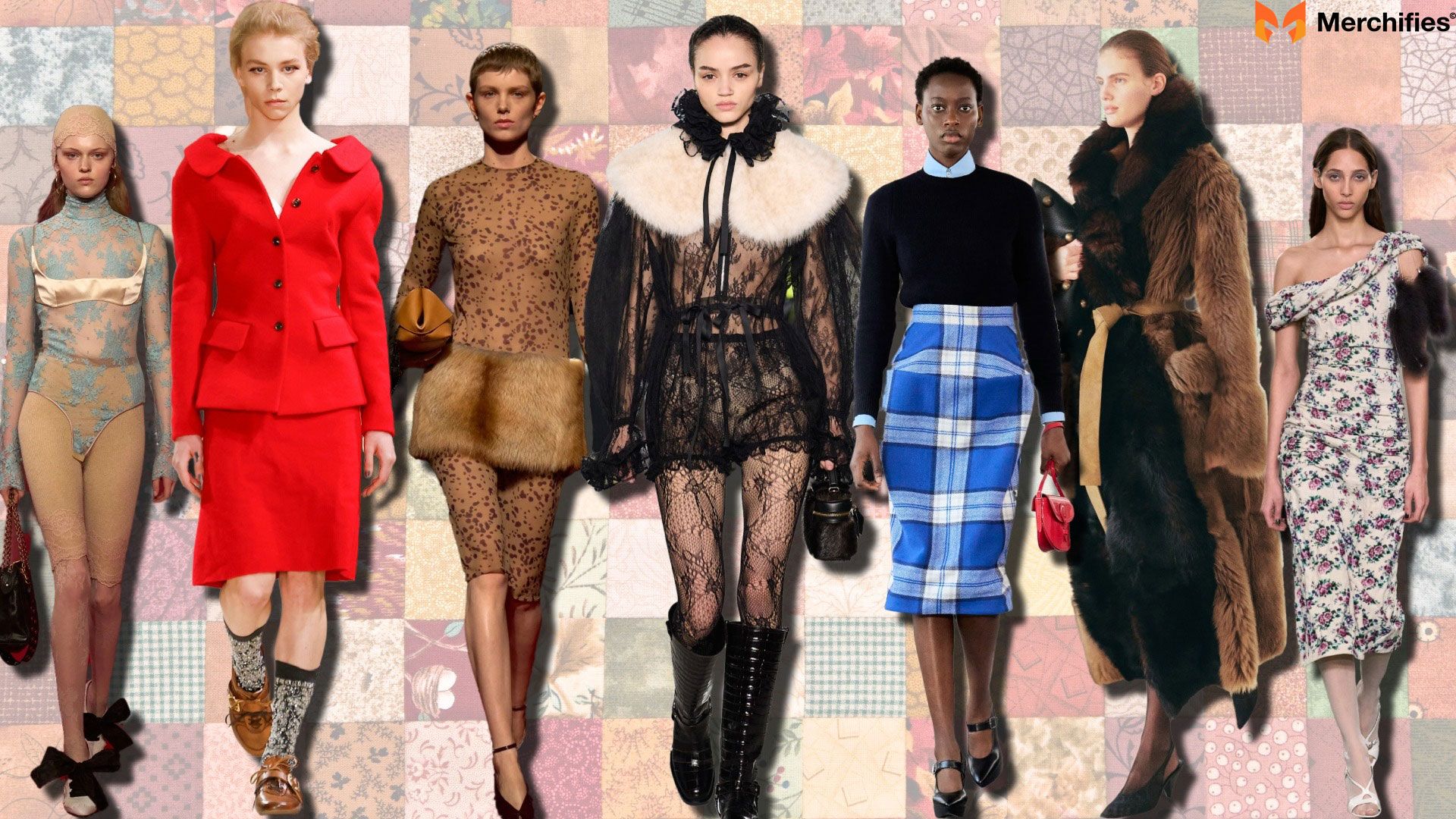
Gender-neutral Christmas shirt options expanded significantly. The traditional pink-for-girls, blue-for-boys binary largely disappeared from children's Christmas fashion. Unisex cuts and designs allowed everyone to express themselves without arbitrary gender constraints.
Size inclusivity became a major focus and selling point. Brands advertised extended size ranges, with models of various body types wearing their designs. The history of Christmas shirts had long been dominated by straight-size options; this decade brought meaningful change. Plus-size Christmas fashion became celebrated rather than afterthought.
Sustainability concerns shaped purchasing decisions more than ever. The fast fashion model—cheap Christmas shirts worn once then discarded—faced growing criticism. Environmental awareness led consumers to seek better alternatives.
Organic cotton Christmas shirts became standard offerings from eco-conscious brands. Certifications like GOTS (Global Organic Textile Standard) assured buyers that their shirts met environmental and ethical standards. Recycled fabric options, including shirts made from plastic bottles, appeared in mainstream retailers.
The second-hand Christmas fashion market exploded. ThredUp, Poshmark, and Depop made buying used Christmas shirts easy and socially acceptable. Vintage Christmas sweaters from the 1980s and 90s commanded premium prices. What was once budget-conscious shopping became trendy and environmentally responsible.
Rental services for Christmas fashion launched, allowing people to wear different Christmas outfits each year without the waste of purchasing and discarding. This subscription model appealed particularly to social media users who wanted varied content without cluttered closets.
Premium quality Christmas shirts emerged as a counter-trend to disposable fast fashion. Some consumers opted to buy fewer, higher-quality Christmas shirts they could wear for many years. Boutique brands offered artisan-designed holiday shirts at higher price points, positioning them as investment pieces rather than seasonal throwaways.
Designer collaborations brought high fashion aesthetics to Christmas shirts. Luxury brands that once ignored holiday apparel released limited-edition Christmas collections. Streetwear brands collaborated with artists on exclusive drops. These weren't just shirts—they were collectibles.
Technology integration continued advancing. LED lights became more sophisticated, allowing for customizable light patterns controlled via smartphone apps. E-ink displays on shirts could show different designs at the push of a button. QR codes linking to digital content remained popular, creating multimedia Christmas experiences.
Augmented reality features became more common. Apps could scan Christmas shirt designs and overlay animated elements visible through your phone screen. These tech-enhanced shirts blurred the line between physical and digital fashion.
Current popular styles in 2024-2025 reflect nostalgia and sophistication simultaneously. Minimalist Christmas designs appeal to those who want festive but subtle. Clean lines, simple color palettes, and understated holiday motifs cater to people tired of visual chaos.
Conversely, maximalist "more is more" designs remain popular. These shirts pile on elements—glitter, patches, 3D additions, mixed patterns—creating over-the-top looks that celebrate excess ironically and unironically at the same time.
Vintage-inspired graphics referencing 1960s-1990s aesthetics remain strong. Retro fonts, color schemes, and design styles evoke nostalgia for earlier Christmas eras. These designs appeal to both people who remember those decades and younger generations drawn to vintage aesthetics.
Pop culture references continue dominating, but they've become more diverse. Netflix, Disney+, and other streaming services produce Christmas content that immediately spawns merchandise. TikTok viral moments appear on shirts within days. The feedback loop between content and commerce has never been faster.
Occupation-specific Christmas shirts remain enormously popular. Teachers, nurses, healthcare workers, first responders, delivery drivers—every profession has Christmas shirt designs acknowledging their work. The pandemic increased appreciation for essential workers, and Christmas shirts reflect that recognition.
Pet-matching Christmas shirts represent a growing trend. Matching shirts for humans and dogs (or cats) acknowledge that pets are family members. These coordinated outfits generate significant social media engagement.
The history of Christmas shirts has reached a point where virtually any interest, identity, or preference can find representation. The market is mature, diverse, and sophisticated in ways that would have seemed impossible when those first simple Christmas t-shirts appeared in 1980s mall kiosks.
The Psychology Behind Christmas Shirts
Understanding why people wear Christmas shirts requires looking beyond fashion history into human psychology. The origin of holiday shirts may be commercial, but their enduring popularity stems from deeper psychological needs.
Identity expression is fundamental to clothing choices, and Christmas shirts amplify this during a specific, culturally significant time. What you wear for Christmas communicates who you are—your sense of humor, values, and group affiliations.
Someone wearing a religious-themed Christmas shirt signals their faith. The message isn't subtle; it's deliberate. In a pluralistic society where religious identity can feel diluted, a Christmas shirt becomes a declaration. A shirt featuring a nativity scene or "Jesus is the reason for the season" tells others what matters to you.
Conversely, someone wearing a secular or sarcastic Christmas shirt signals different values. A design reading "Sleigh all day" or featuring cartoon characters rather than religious imagery says "I celebrate Christmas culturally, not religiously." Neither approach is right or wrong—both are identity statements.
Humor style also expresses identity through Christmas shirts. Someone wearing a sophisticated pun shows different personality traits than someone in a crude joke shirt. The dad-joke sweater person differs from the dark-humor shirt person. We choose Christmas designs that align with how we want others to perceive us.
Nostalgia and memory create powerful connections to Christmas shirts. Psychologists note that nostalgia—that bittersweet longing for the past—peaks during holidays. Christmas shirts become material anchors to positive memories.
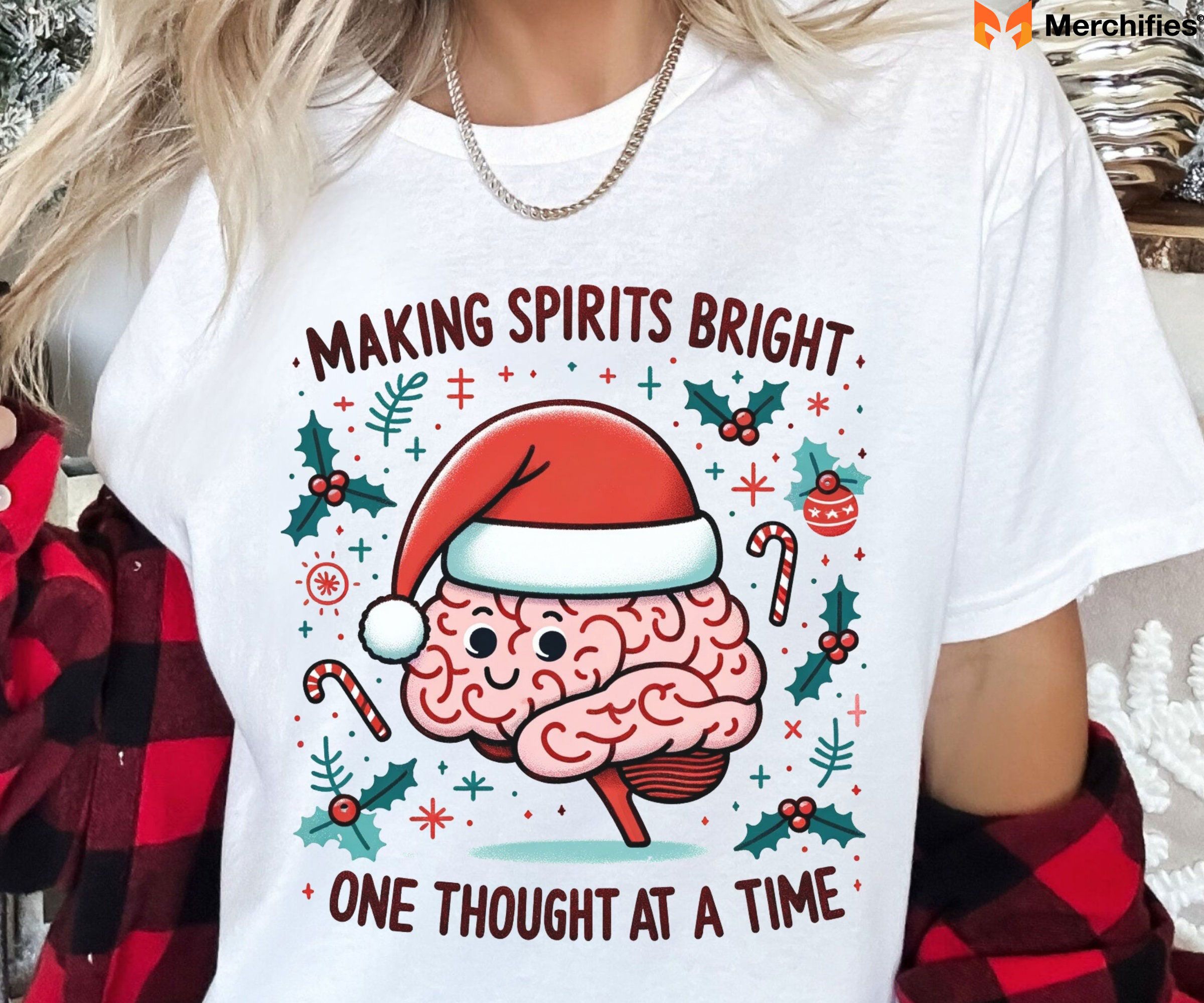
Many people own Christmas shirts connected to specific memories. I interviewed a woman who wears the same Christmas sweatshirt every year because she bought it the Christmas her daughter was born. The shirt isn't special itself; it's what it represents. Each year she wears it, she remembers that joyful time.
This phenomenon explains why people keep Christmas shirts for decades, even when styles change. That ratty sweater isn't just clothing—it's a memory trigger. Wearing it recreates, even briefly, feelings from earlier times when perhaps life felt simpler or happier.
Nostalgia also explains the popularity of retro Christmas fashion. Younger generations who didn't experience the 1980s or 90s firsthand still feel drawn to vintage designs. This isn't their nostalgia exactly, but borrowed nostalgia for an era they find appealing. The Christmas shirts connect them to imagined pasts.
Dr. Clay Routledge, a psychologist who studies nostalgia, told me: "Christmas already activates nostalgic memories for most people. Adding a visual element like a specific shirt that appeared in old family photos creates a powerful memory anchor. People aren't just wearing a shirt; they're wearing a piece of their history."
Permission to be playful is another psychological function of Christmas shirts. Adult life demands seriousness most of the time. Work has dress codes. Social situations have expectations. We constrain our playfulness to appear professional and mature.
Christmas temporarily relaxes these rules. Society collectively agrees that being silly is acceptable during holidays. Christmas shirts provide a sanctioned outlet for playfulness that might seem inappropriate other times.
The ugly Christmas sweater phenomenon perfectly illustrates this. These garments are objectively ridiculous—that's the point. Wearing one signals "I'm not taking myself too seriously right now." This performative lack of seriousness can be deeply liberating for people whose regular lives require constant professionalism.
Research shows that playfulness benefits adult mental health. It reduces stress, increases creativity, and strengthens social bonds. Christmas shirts facilitate this playfulness through socially approved channels. You can wear something ridiculous to the office Christmas party without professional consequences because everyone understands the context.
Children's Christmas shirts serve different but related purposes. Kids don't need permission to be playful—that's their default state. But Christmas shirts let them participate in the holiday's specialness. Wearing a shirt with Santa or reindeer makes children feel part of something bigger than ordinary days.
Community bonding through Christmas shirts creates belonging and connection. When families wear matching shirts, they're making a visual statement: "We belong together." This becomes especially important for blended families, adoptive families, or chosen families who might lack biological connections.
I spoke with a woman who married a man with two children from a previous marriage. They started a tradition of matching Christmas shirts as a deliberate family-building tool. "Those shirts say 'we're a unit,'" she told me. "It sounds silly, but it mattered, especially early on when the kids were adjusting."
Workplace Christmas shirts serve similar functions. When an entire office wears matching holiday shirts or participates in ugly sweater day, it builds team cohesion. These shared experiences, even superficial ones, create common ground and inside jokes that strengthen workplace relationships.
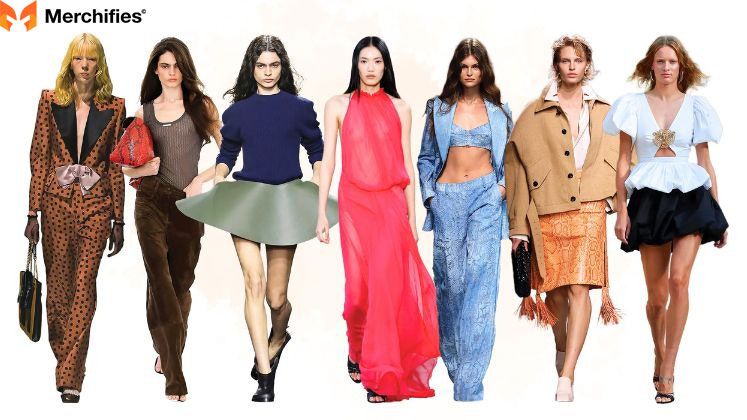
Social psychology research confirms that physical similarity increases perceived closeness. When people dress alike, they unconsciously feel more connected. Christmas shirts exploit this principle, creating temporary tribal bonds through coordinated clothing.
The conversation-starter aspect of Christmas shirts shouldn't be underestimated either. A particularly funny or unusual shirt invites comments and interaction. In an era of decreased face-to-face socializing, anything facilitating human connection has value.
Christmas shirts also signal approachability. Someone wearing a humorous Christmas shirt appears more friendly and open than someone in formal attire. This can ease social interactions during holiday parties where people might not know each other well.
The psychological functions of Christmas shirts reveal why they've become such a durable part of American culture. They're not just fashion—they're tools for expressing identity, triggering positive memories, enabling playfulness, and building community. Understanding this helps explain the trajectory in the history of Christmas shirts from simple novelty to cultural institution.
Cultural Variations in Holiday Shirts
While this article focuses primarily on American Christmas shirt culture, the origin of holiday shirts extends beyond U.S. borders, and examining global variations provides valuable context.
Regional USA Differences
Even within America, Christmas shirt culture varies regionally. Southern Christmas fashion tends toward more traditional and overtly religious designs. "Jesus is the reason for the season" appears more commonly on Southern Christmas shirts. Family-oriented, wholesome designs dominate.
Northern states, particularly in New England, embrace the cozy winter aesthetic. Christmas shirts featuring snow, skiing, hot chocolate, and winter sports reflect the season's actual weather conditions. These designs acknowledge that Christmas means cold weather, unlike in warmer climates.
Coastal regions, especially the Pacific Northwest and urban areas generally, trend toward ironic and alternative Christmas shirt designs. These markets support niche, artistic Christmas fashion that might not sell elsewhere. Political and satirical Christmas shirts find their audience primarily in liberal urban areas.
The Midwest embodies heartland values in Christmas fashion—wholesome but not preachy, festive but practical. Christmas shirts with farm imagery, deer, and traditional symbols sell well. The elaborate ugly Christmas sweater parties seen in coastal cities exist here too, but with different aesthetic sensibilities.
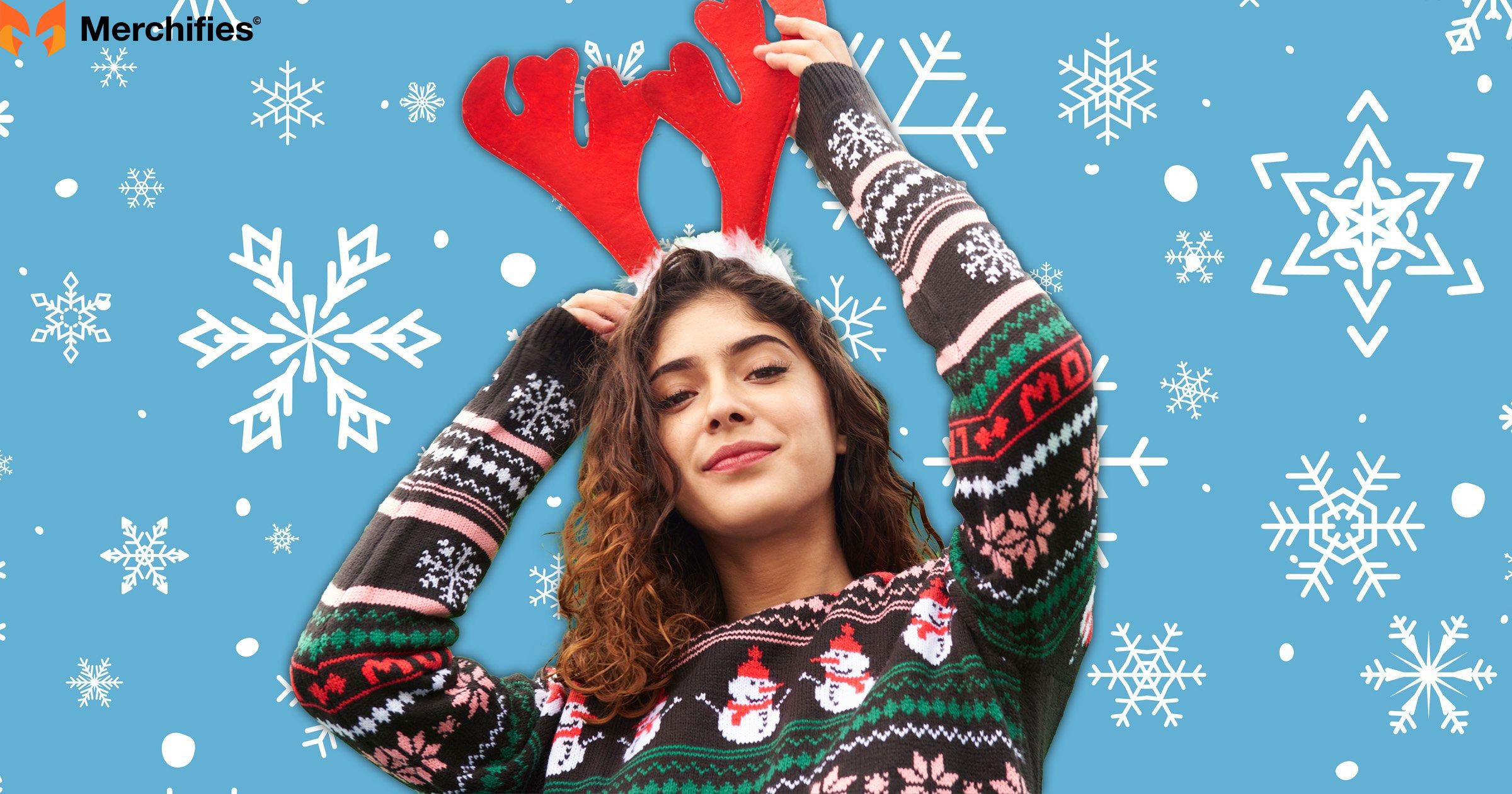
Southwest states and Southern California face a unique challenge: Christmas when it's warm. "Surfing Santa" shirts work here but nowhere else. Desert Christmas themes incorporating cacti and warm weather feel authentic to residents but seem bizarre to Northerners expecting snow.
Climate profoundly affects Christmas shirt design and wearing patterns. In Florida or Arizona, heavy Christmas sweaters are impractical. Lightweight Christmas t-shirts dominate. Someone in Minnesota might layer a Christmas shirt under a sweater that's also Christmas-themed, creating maximum festivity to combat winter darkness.
International Christmas Fashion
Australia and New Zealand experience Christmas during summer, fundamentally changing holiday fashion. Christmas barbecues on the beach require very different attire than American Christmas dinners. Christmas tank tops, shorts with holiday prints, and swimwear with Santa designs make sense in December heat.
Australians embrace this climatic difference playfully. Christmas shirts featuring Santa in sunglasses, surfing, or drinking cold beer acknowledge the reversed seasons. Beach cricket in Christmas hats represents their unique holiday culture. The origin of holiday shirts in Australia reflects their environment while borrowing American commercial Christmas imagery.
United Kingdom and Europe have longer Christmas traditions than America but adopted commercial Christmas fashion later. The UK's "Christmas jumper" (sweater) culture mirrors American ugly Christmas sweaters, but British humor brings different sensibilities. More understated, drier wit characterizes British Christmas fashion compared to American enthusiasm.
European Christmas markets influence regional holiday fashion. Traditional crafts and folk designs appear on Christmas clothing more than commercial cartoon characters. However, globalization has homogenized Christmas fashion significantly—you'll find similar commercial Christmas shirts in London, Berlin, and New York.
Latin America celebrates Christmas with religious devotion and family emphasis. Nochebuena (Christmas Eve) often matters more than Christmas Day. Christmas fashion tends more formal for church services and family gatherings, though casual Christmas shirts have made inroads among younger generations.
Mexican Christmas culture features Las Posadas, the nine-day journey reenactment before Christmas. Traditional dress for these celebrations differs from commercial Christmas shirts, though modern families increasingly mix traditional and contemporary elements.
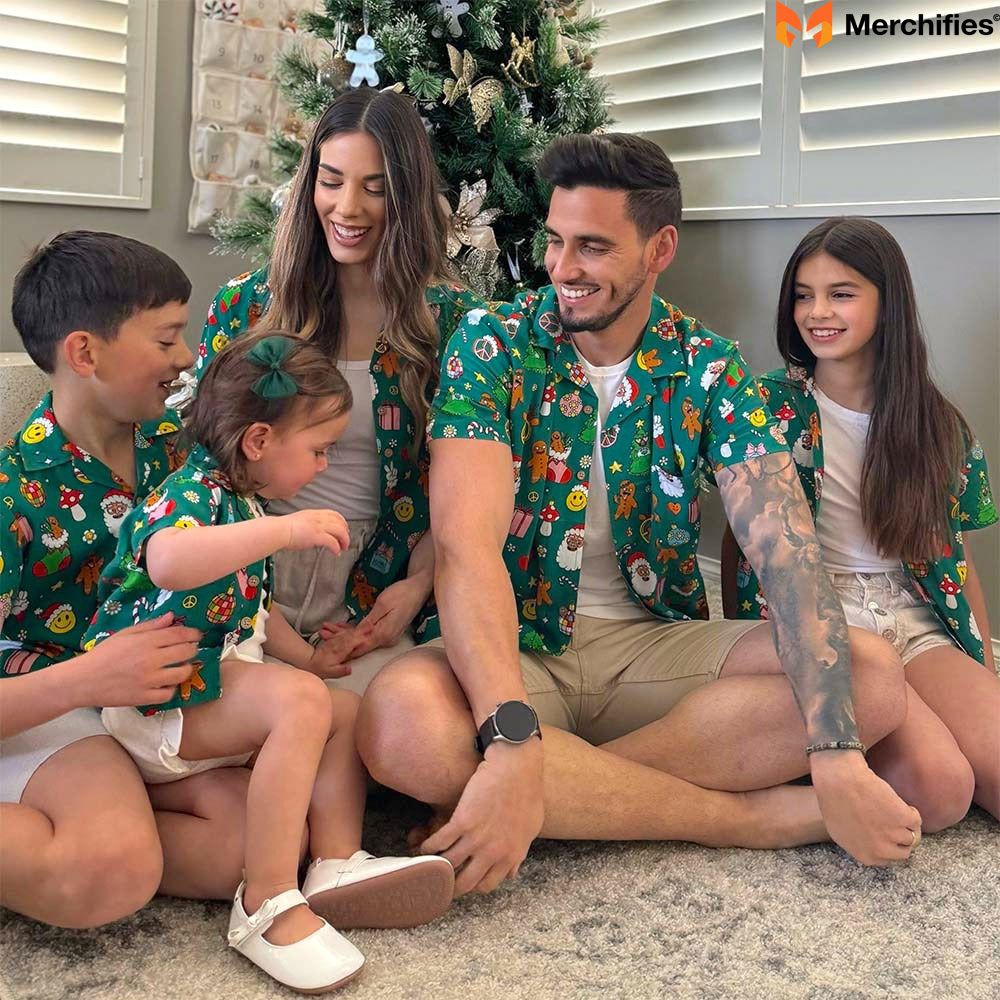
Asia presents fascinating Christmas fashion dynamics because Christmas isn't historically or religiously significant in most Asian cultures. Japan, South Korea, and increasingly China have adopted commercial Christmas celebrations without the religious or family tradition components.
In Japan, Christmas is treated somewhat like Valentine's Day—a romantic holiday for couples rather than family time. Christmas fashion here tends more date-appropriate than family-gathering casual. Couples wear coordinated outfits, sometimes subtly matching rather than obviously identical.
Korean Christmas fashion embraces cute aesthetics. Character-based Christmas designs—think Hello Kitty or Line Friends in Santa hats—dominate. The kawaii influence creates Christmas shirts that are adorable rather than funny or religious.
China's emerging middle class has adopted Christmas as a commercial, gift-giving occasion. Western Christmas imagery appears in Chinese cities, and Christmas shirts have become fashion accessories for young urbanites wanting to participate in global trends.
Religious Diversity in Holiday Shirts
Not everyone celebrating in December is Christian, and the origin of holiday shirts has expanded to acknowledge this diversity.
Hanukkah shirts have existed for decades but remained niche until recent years. The eight-day Jewish Festival of Lights overlaps with Christmas timing-wise, and Jews in America long felt excluded from dominant Christmas culture. Hanukkah shirts allow participation in holiday fashion without compromising religious identity.
Designs range from humorous ("Oy to the World") to serious (menorah imagery) to playful (dreidel graphics). Some Hanukkah shirts deliberately parallel Christmas shirt aesthetics, creating equivalent holiday fashion for Jewish families. The ugly Hanukkah sweater concept directly mimics ugly Christmas sweaters but with Jewish symbols.
Kwanzaa celebration shirts have grown alongside increased recognition of this African-American holiday. Created in 1966, Kwanzaa runs December 26 through January 1, celebrating African heritage, community values, and family. Kwanzaa shirts feature the holiday's colors—red, black, and green—and symbols like the kinara (candleholder).
Multi-faith holiday shirts serve interfaith families. Designs might combine Christmas and Hanukkah imagery, or simply say "Happy Holidays" to encompass all December celebrations. These shirts navigate the reality that many American families practice different traditions within one household.

Winter-themed secular shirts avoid religious imagery entirely, focusing on season rather than specific holidays. Snowflakes, snowmen, winter wildlife, and "Let it snow" messages appeal to anyone celebrating December, regardless of religious or cultural background.
This diversity in the origin of holiday shirts reflects America's pluralistic society and the tension between dominant Christmas culture and the desire for inclusivity. The market has responded by offering something for everyone, though Christmas shirts still vastly outnumber alternatives simply due to demographic majority.
Special Populations and Christmas Shirts
Certain groups have developed unique relationships with Christmas shirts, creating specialized markets and design niches within the broader history of Christmas shirts.
Profession-Based Christmas Fashion
Healthcare workers were already wearing Christmas scrubs and shirts before COVID-19, but the pandemic elevated their visibility and cultural appreciation. Nurses, doctors, and other medical professionals brighten sterile hospital environments with festive scrubs during December. Pediatric units especially embrace this—a nurse in a cheerful Christmas shirt makes hospitalization slightly less scary for children.
Medical Christmas shirts often feature profession-specific humor: "Nurses make it merry and bright," "Code Christmas," or designs incorporating medical symbols with holiday themes. These shirts build camaraderie among staff while providing comfort to patients and families during difficult times.
Teachers rank among the top consumers of occupation-specific Christmas shirts. Teacher Christmas fashion combines professional requirements with festive expression. An elementary teacher can wear a Christmas shirt to maintain classroom professionalism while creating holiday excitement for students.
Teacher Christmas shirts often feature educational themes combined with holidays: "Jingle bells, Batman smells" (classic children's song), "I'm dreaming of a white Christmas... but if the white runs out, I'll drink the red" (wine reference), "All I want for Christmas is a quiet class." These designs speak to teacher experiences while remaining classroom-appropriate.
Service industry workers including retail employees, restaurant staff, and delivery drivers often wear Christmas shirts as part of their job. Many employers require or encourage holiday attire to enhance customer experience. This practical necessity created demand for durable, affordable Christmas shirts that withstand repeated wearing and washing.
Retail workers sometimes joke that they see enough Christmas before Thanksgiving that they're sick of it by December. Yet they wear Christmas shirts because customers expect festive service. This tension between authentic holiday enthusiasm and performative cheer appears in service worker-specific designs: "It's called customer service, not customer servitude," "Dear Santa, define 'naughty.'"
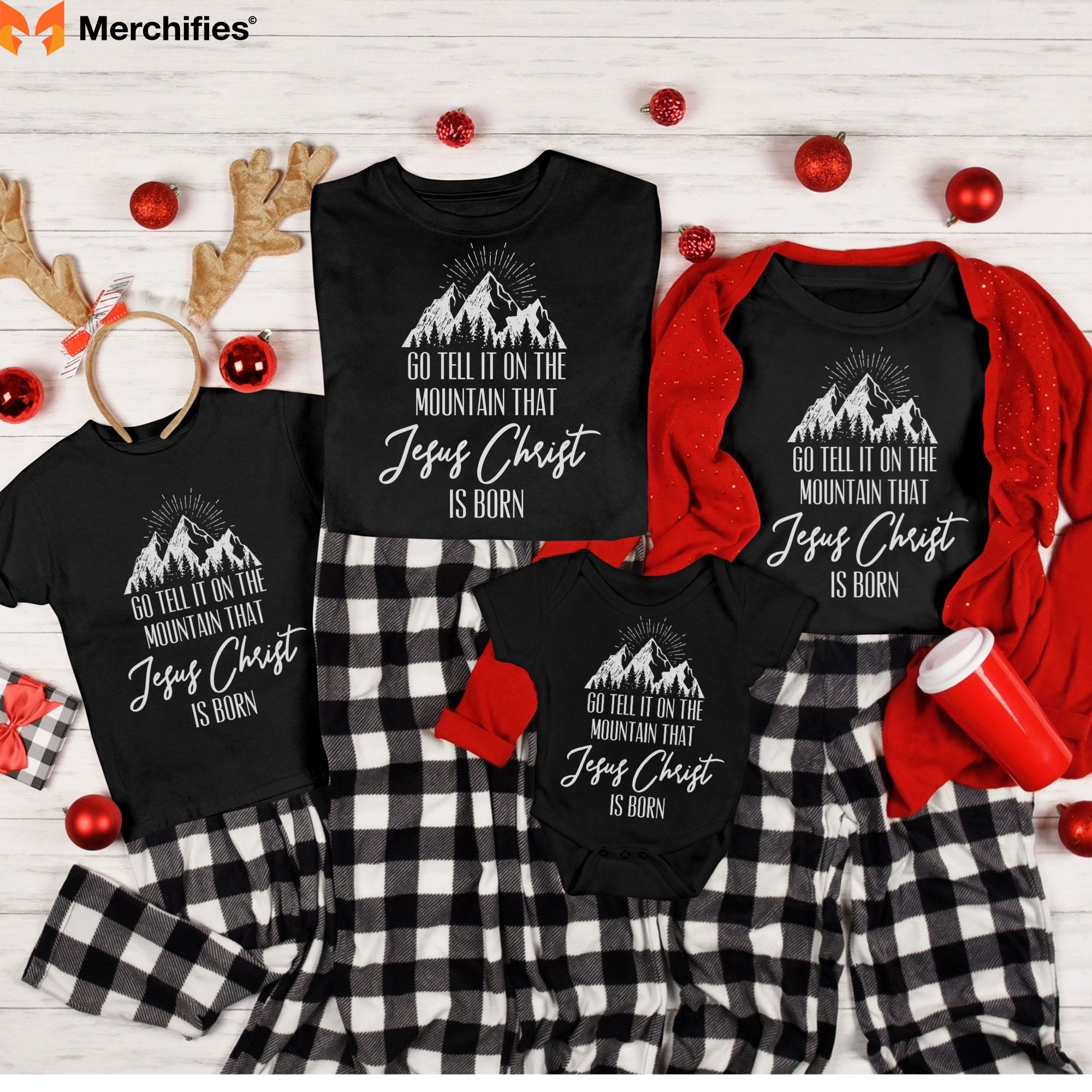
First responders including police, firefighters, and paramedics have embraced Christmas shirt culture, often using it for community relations. Fire departments host toy drives, with firefighters wearing Christmas shirts while distributing gifts to children. Police departments participate in "Shop with a Cop" programs where officers in holiday attire take underprivileged children Christmas shopping.
These profession-specific Christmas shirts serve dual purposes: building internal team culture while managing public interaction. A paramedic wearing a Christmas shirt while responding to calls brings small comfort to people having worst days.
Military members station at bases worldwide celebrate Christmas far from home. Christmas shirts connect them to American holiday traditions despite geographic distance. Military unit Christmas shirts featuring service branch emblems combined with holiday graphics build cohesion while acknowledging the sacrifice of serving during holidays.
Military families also wear matching shirts that acknowledge deployment situations: "Daddy's home for Christmas" when reunions occur, or "Wishing Daddy was home" when they don't. These shirts communicate family situations and garner community support.
LGBTQ+ Community Christmas Fashion
The LGBTQ+ community has carved out distinct space within Christmas shirt culture. For many LGBTQ+ individuals, biological family relationships are complicated or estranged. "Chosen family"—close friends who provide family-level support—becomes especially important during holidays traditionally centered on biological relatives.
Christmas shirts acknowledging chosen family have become popular: "Friends are the family we choose," paired with holiday imagery. These designs validate non-traditional family structures.
Pride-themed Christmas shirts combine rainbow flag colors with holiday motifs. Santa wearing Pride colors, Christmas trees with rainbow ornaments, and messages like "Merry Queermas" create inclusive holiday fashion for LGBTQ+ people who felt excluded from mainstream Christmas culture.
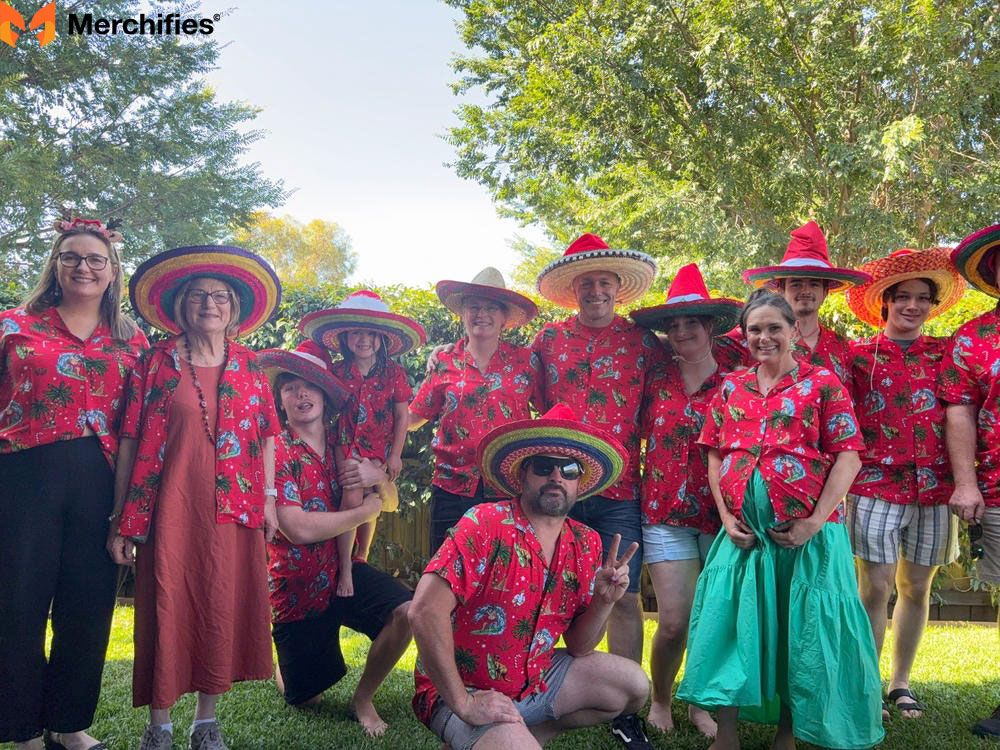
Same-sex couple Christmas shirts feature two brides or two grooms in holiday settings, providing representation that heteronormative Christmas imagery excluded for decades. Matching couple shirts allow LGBTQ+ partners to publicly celebrate their relationships during holidays just as heterosexual couples do.
Drag performers have created spectacular Christmas fashion that pushes boundaries and entertains. Elaborate Christmas-themed drag shows have become holiday traditions in many cities, with performers in outrageous holiday costumes that inspire both professional drag artists and everyday people's Christmas fashion choices.
The increasing visibility and acceptance of LGBTQ+ people has expanded Christmas shirt design to include diverse families, relationships, and identities. Major retailers now carry inclusive Christmas fashion, marking significant cultural progress.
Different Life Stages
Children's Christmas shirts serve different purposes than adult versions. Parents dress children in holiday outfits for photos, family gatherings, and school parties. Cute factor matters immensely—reindeer, snowmen, and cheerful Santa designs dominate rather than humor or irony.
Matching sibling Christmas shirts are enormously popular. Birth order shirts—"Big Brother Elf," "Little Sister Elf"—acknowledge family structure in holiday photos. These shirts create visual cohesion in pictures while making children feel special.
Teenagers often resist Christmas shirts as uncool, then rediscover them ironically. The teenage years represent rebellion against childhood and family traditions, and refusing to wear the family Christmas shirt becomes an act of independence. Later, perhaps in college, those same teenagers might wear Christmas shirts to ugly sweater parties, reclaiming holiday fashion on their terms.
Young adults enthusiastically embrace Christmas shirt culture, particularly ugly Christmas sweaters at parties. This demographic drives much of the humor and irony in Christmas fashion. They're old enough to appreciate the kitsch but young enough to lack the formal family responsibilities that complicate holiday celebration.
Parents of young children wear Christmas shirts primarily for their kids' benefit. Creating magical Christmas memories motivates fashion choices. Even parents who wouldn't naturally choose a light-up Rudolph sweater wear one because it makes their toddler giggle.

Seniors have watched the entire evolution of casual Christmas fashion. Some embrace it enthusiastically, delighted that holidays no longer require uncomfortable formal attire. Others maintain traditional dress-up habits, considering Christmas shirts too casual for their sense of occasion. Both approaches are valid responses to cultural change.
I interviewed a 75-year-old woman who said, "When I was raising children, we dressed in our Sunday best for Christmas morning. Now I wear a sweatshirt with snowflakes. It's more comfortable, but sometimes I miss feeling dressed up for something special."
This generational diversity in Christmas fashion reflects broader cultural negotiations about formality, tradition, and change. The history of Christmas shirts documents this ongoing conversation about what holidays should look and feel like.
The Business of Christmas Shirts
Behind every Christmas shirt you see is a complex business ecosystem. Understanding the commercial side of the origin of holiday shirts reveals how cultural trends become profitable industries.
Market Size and Economics
The holiday apparel market, including Christmas shirts, represents billions of dollars in annual sales. Market research firms estimate that Americans spend between $1.2 and $1.7 billion specifically on Christmas sweaters and shirts annually, with total holiday clothing spending much higher when including all festive outfits.
This market peaks sharply. Approximately 40% of annual Christmas shirt sales occur in November, with another 35% in the first three weeks of December. Retailers must predict demand accurately because unsold Christmas inventory has minimal value after December 25th. The seasonal concentration creates both opportunity and risk.
Different price points serve different market segments. Mass-market retailers like Walmart and Target sell Christmas shirts for $10-$30, targeting price-conscious consumers who might buy several shirts for family members. Mid-range retailers including department stores and specialty shops sell shirts for $25-$60, emphasizing quality and design. Premium and boutique brands charge $60-$150+ for designer Christmas fashion, positioning holiday shirts as investment pieces or collectibles.

The profit margins vary significantly. Fast fashion Christmas shirts might have 50-60% markup, but high volume compensates for lower per-unit profit. Premium Christmas shirts carry 200-300% markup, but lower sales volume requires higher margins for profitability.
E-commerce has democratized the Christmas shirt business. Small entrepreneurs can design shirts, list them on platforms like Etsy or their own Shopify stores, and fulfill orders through print-on-demand services without holding inventory or significant capital investment. This low barrier to entry created unprecedented competition and variety.
Design and Production
The Christmas shirt design process begins months before holiday season. Designers working for major retailers start creating Christmas collections in spring, finalizing designs by early summer so production can begin. This lead time means designers must predict what will resonate with consumers 6-9 months in future.
Trend forecasting influences design decisions. Fashion industry analysts identify broader trends—color palettes, design styles, cultural moments—that designers incorporate into Christmas shirts. For example, if millennial pink is trending generally, it might appear in Christmas shirt color schemes even though pink isn't traditional holiday color.
Pop culture licensing plays enormous role in commercial Christmas shirt design. Using established characters, movie quotes, or brand imagery requires licensing agreements with intellectual property owners. These deals can be expensive but provide built-in audience appeal. A Christmas shirt featuring Disney characters will sell based on brand recognition alone.
Production typically happens overseas, primarily in Bangladesh, Vietnam, China, and India, where labor costs are lower. A Christmas shirt selling for $25 in America might cost $3-5 to manufacture, including materials and labor. Shipping adds additional cost, especially as companies increasingly use air freight to meet seasonal deadlines.
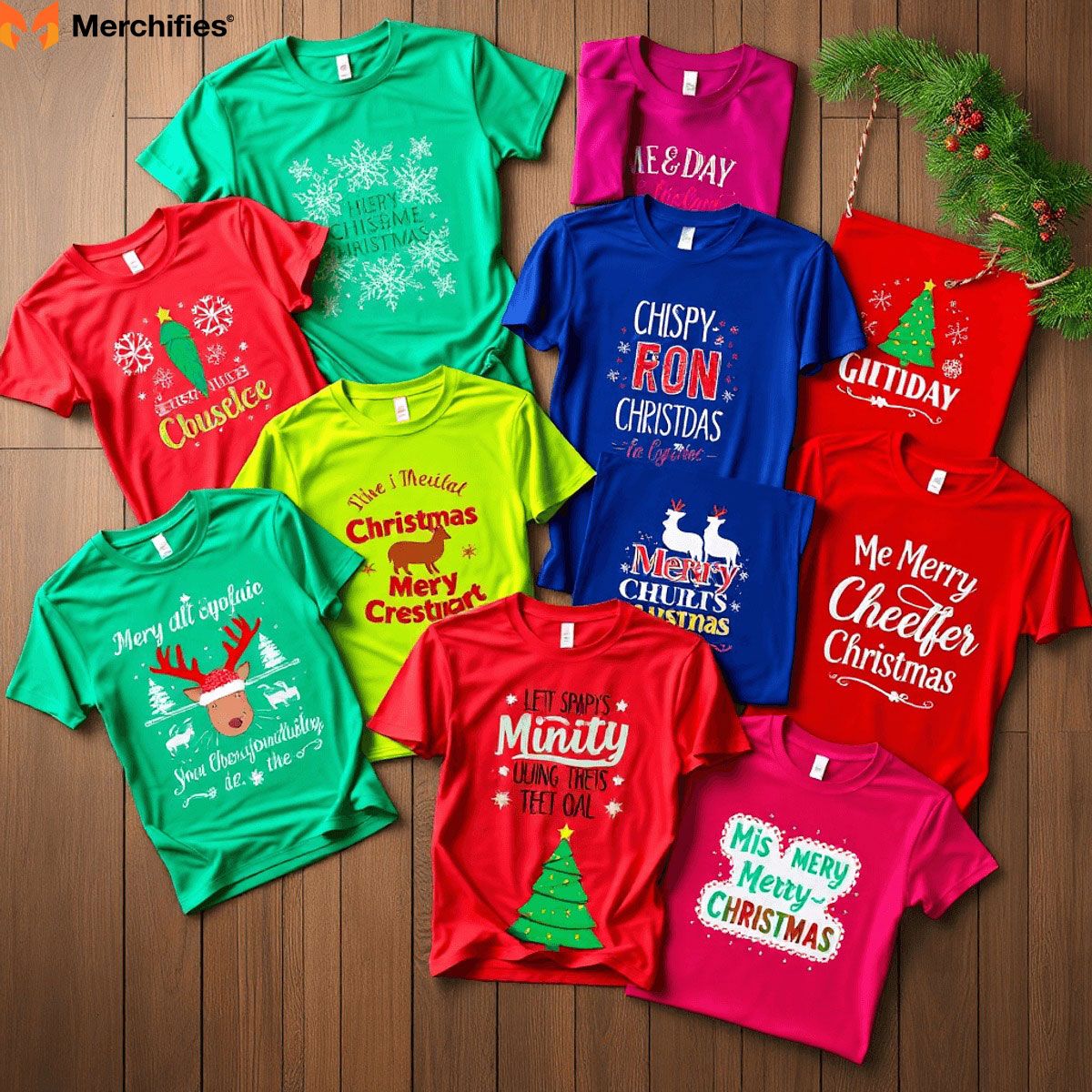
Quality varies enormously. Fast fashion Christmas shirts use inexpensive fabrics (often polyester blends) and printing methods optimized for cost over durability. These shirts might last one season. Premium Christmas shirts use better materials—organic cotton, superior printing techniques—designed to withstand many years of washing and wearing.
Print-on-demand revolutionized small-scale Christmas shirt production. Services like Printful, Printify, and TeePublic handle manufacturing and shipping, allowing designers to focus purely on creating designs. When someone orders a shirt, the service prints and ships it directly to the customer. The designer never touches physical inventory.
This model enables niche designs that wouldn't justify traditional manufacturing. A Christmas shirt targeting "left-handed vegetarian yoga instructors" might only sell fifty units annually, but print-on-demand makes that viable. The long tail of hyper-specific interests can be served profitably.
Marketing Strategies
Social media dominates Christmas shirt marketing. Instagram and Pinterest drive visual discovery—users browsing holiday content see sponsored Christmas shirt ads targeted based on their interests and demographics. Influencer partnerships amplify reach; a lifestyle influencer wearing a brand's Christmas shirt in content exposes it to thousands or millions of followers.
User-generated content is invaluable. Companies encourage customers to post photos wearing their Christmas shirts using branded hashtags. This creates authentic testimonials while providing content the company can repurpose with permission. A gallery of real customers in Christmas shirts is more persuasive than professional product photos.
Email marketing remains effective for Christmas shirt sales. Companies build customer lists year-round, then launch aggressive email campaigns starting in October. Subject lines like "Early bird Christmas collection now available" or "Only 10 days until Christmas—order now for guaranteed delivery" create urgency.
Limited edition releases and artificial scarcity drive sales. When companies announce that a particular Christmas shirt design is only available for short window or in limited quantities, it triggers fear of missing out (FOMO). Customers purchase immediately rather than deliberating, worried the design will sell out.

Charity tie-ins provide marketing benefits while doing good. Companies partner with nonprofits, donating percentage of Christmas shirt sales to causes like children's hospitals or food banks. This appeals to consumers' values while differentiating the brand from purely profit-driven competitors.
Nostalgia marketing leverages emotional connections. Brands reissue vintage Christmas shirt designs from the 1980s or 90s, marketing them to people who remember those eras fondly. "Remember these?" campaigns trigger powerful nostalgic responses that drive purchasing.
The business of Christmas shirts demonstrates how cultural phenomena become commercialized. What began as genuine holiday expression has become multi-billion dollar industry—not replacing authentic celebration, but commodifying it. Understanding this commercial reality adds nuance to the history of Christmas shirts.
Environmental and Ethical Considerations
As awareness of fashion industry's environmental impact grows, Christmas shirts face increasing scrutiny. The origin of holiday shirts as disposable, single-season garments creates sustainability challenges the industry is slowly addressing.
The Fast Fashion Problem
Fast fashion transformed clothing from durable goods into disposable commodities. Christmas shirts epitomize this problem—they're often worn a few times in December, then discarded. The business model encourages buying new Christmas shirts annually rather than maintaining a collection over years.
This disposability has environmental costs. Textile production consumes enormous water resources. Cotton farming requires pesticides and fertilizer with environmental consequences. Synthetic fabrics are petroleum-based, contributing to fossil fuel dependence.
Dyeing fabrics creates water pollution. The fashion industry is second-largest water polluter globally, and even holiday shirts contribute. Those vibrant Christmas reds and greens require chemical dyes that often end up in waterways near manufacturing facilities, particularly in countries with lax environmental regulations.
The end-of-life for Christmas shirts is equally problematic. Most textile waste goes to landfills where synthetic fabrics take decades or centuries to decompose. Polyester sheds microplastics during washing that enter water systems and eventually oceans. Marine life ingests these microplastics with unknown long-term consequences.
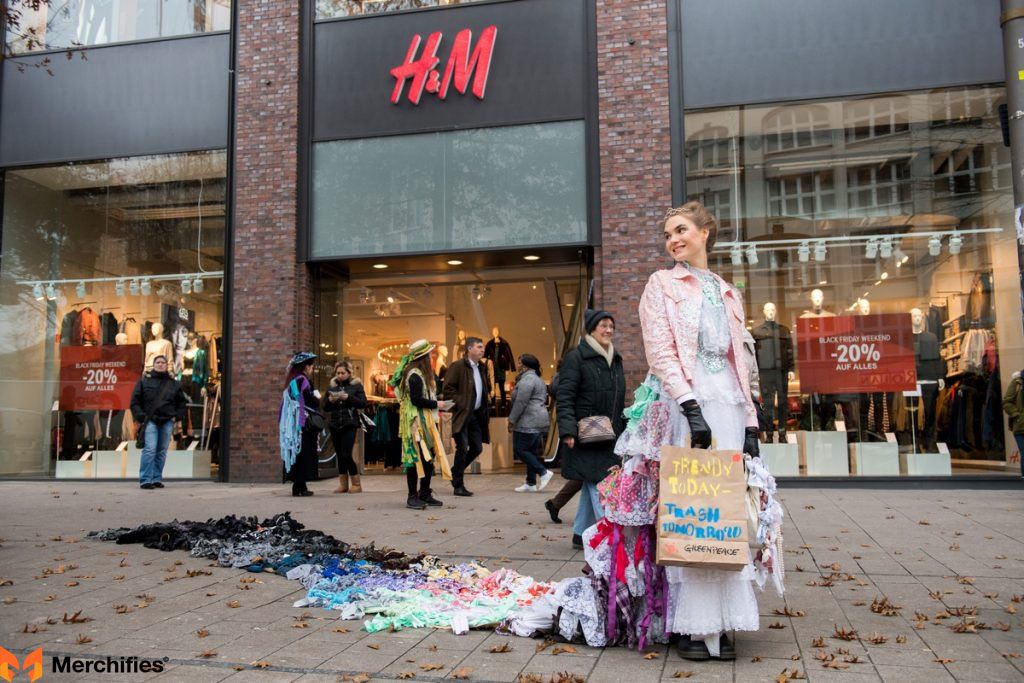
Greenhouse gas emissions from manufacturing, shipping Christmas shirts globally, and eventual disposal contribute to climate change. One t-shirt generates approximately 7-10 kg of CO2 emissions across its lifecycle. Multiply that by millions of Christmas shirts sold annually, and the impact is significant.
The social costs shouldn't be ignored either. Garment workers in developing countries, predominantly women, often work in unsafe conditions for poverty wages. The 2013 Rana Plaza collapse in Bangladesh, killing 1,134 garment workers, highlighted fashion industry's exploitation of vulnerable workers. Christmas shirts aren't exempt from these ethical concerns.
Sustainable Alternatives
Growing environmental consciousness is driving change, slowly. Several approaches offer more sustainable Christmas fashion options.
Organic cotton Christmas shirts avoid synthetic pesticides and fertilizers used in conventional cotton farming. Organic certification standards (like GOTS - Global Organic Textile Standard) ensure environmental and social standards are met throughout production. These shirts cost more but have lower environmental footprint.
Recycled materials create Christmas shirts from post-consumer waste. Plastic bottles can be processed into polyester fabric, diverting waste from landfills and oceans. Some companies produce Christmas shirts from recycled cotton, reclaiming textile waste and reducing need for virgin materials.
Natural dyes derived from plants and minerals avoid synthetic chemicals, though their use remains limited due to higher costs and color limitations. Some sustainable brands use natural dyeing methods for Christmas shirts, marketing them as earth-friendly options.
Local production reduces carbon footprint from international shipping. Some American companies manufacture Christmas shirts domestically, emphasizing "Made in USA" as environmental and ethical selling point. Local production also ensures better labor standards.
Quality over quantity represents a mindset shift. Instead of buying cheap Christmas shirts that last one season, investing in well-made shirts that endure for years reduces overall environmental impact. Some brands position premium Christmas shirts as heirlooms to be worn annually for decades.
Second-hand Christmas fashion has grown significantly. Thrift stores, consignment shops, and online resale platforms like ThredUp and Poshmark make buying used Christmas shirts easy and socially acceptable. What was once budget-driven behavior is now environmental virtue.

Vintage Christmas sweaters from the 1980s and 90s command impressive prices in resale markets, transforming disposable fashion into collectibles. This circular economy approach extends product lifespan dramatically.
Rental services for Christmas fashion have emerged, allowing people to wear different Christmas outfits each year without purchasing and discarding. Services like Nuuly and Rent the Runway include holiday selections. Subscribers rent Christmas shirts for December, then return them for cleaning and rental to someone else next year. This maximizes garment utility while providing variety.
Clothing swaps and community exchanges let people trade Christmas shirts they no longer want for different designs. These events create social experiences while keeping clothing in use. Many communities organize holiday-specific swaps in November.
Ethical Manufacturing
Labor practices in garment production face increasing scrutiny. Consumers want assurance their Christmas shirts weren't made by exploited workers.
Fair Trade certification guarantees that workers received fair wages and worked in safe conditions. Fair Trade Christmas shirts cost more, reflecting the true cost of ethical labor practices. The premium compensates workers properly rather than maximizing corporate profit through exploitation.
Transparency in supply chains allows consumers to understand where and how Christmas shirts are made. Some brands provide detailed information about their factories, sharing facility names, locations, and working condition audits. This transparency helps consumers make informed ethical choices.
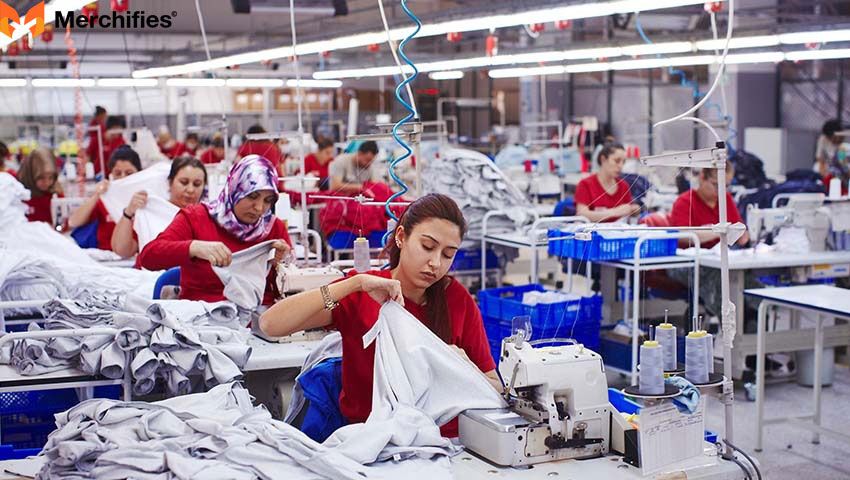
B Corporation certification demonstrates companies meeting rigorous social and environmental standards. Certified B Corps balance profit with purpose, and several produce Christmas shirts within this ethical framework.
The tension between affordability and sustainability remains unresolved. Ethical, environmentally-friendly Christmas shirts cost more than fast fashion alternatives. Not everyone can afford premium prices, especially when buying Christmas shirts for entire family.
However, cultural attitudes are shifting. Younger generations particularly value sustainability and ethics, willing to pay more or buy fewer items to align purchases with values. The history of Christmas shirts is entering a new phase where environmental and social impacts influence design and purchasing decisions more than ever before.
Expert Perspectives on Christmas Shirt Culture
To understand Christmas shirt significance beyond personal experience, I consulted experts across multiple disciplines. Their insights illuminate different facets of the origin of holiday shirts and what this cultural phenomenon reveals about American society.
Fashion Historians
Dr. Margaret Collins, a fashion historian specializing in American casual wear at the Fashion Institute of Technology, provided historical context: "The shift from formal to casual Christmas attire represents a broader democratization of fashion that accelerated post-World War II. Before that, Christmas clothing signaled class distinctions—wealthy families wore elaborate outfits that poorer families couldn't afford. The rise of mass-produced Christmas shirts, especially t-shirts, created a more egalitarian holiday fashion landscape where everyone could participate regardless of economic status."
She continued, "What's fascinating about Christmas shirts is how they've retained specialness despite casualization. A Christmas t-shirt is still special—it's not what you wear on random Tuesday. So we've maintained the tradition of clothing marking the holiday as distinct, but we've rejected the formality and expense that previous generations required. That's very American: casual but still meaningful."
When I asked about ugly Christmas sweaters specifically, Dr. Collins laughed. "The ironic embrace of ugly sweaters is postmodern fashion in its purest form. These sweaters were genuinely ugly when made originally—your grandmother wasn't being ironic. But by the 2000s, we'd developed enough distance to appreciate them as camp, as artifacts of a different aesthetic era. Wearing them ironically while simultaneously sincerely enjoying them—that's the cultural moment we're in."
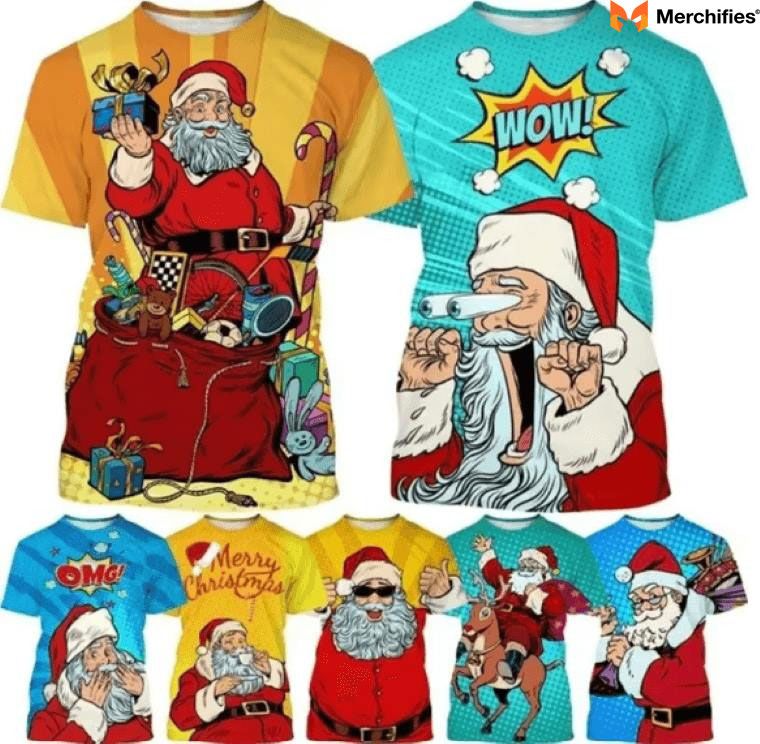
James Henriksen, a cultural historian who studies American holidays, connected Christmas shirts to broader holiday commercialization: "Christmas became highly commercialized in the late 19th century, but that commercialization was initially about gifts, not personal consumption of holiday items. Christmas shirts represent a newer phase: consuming the holiday itself through personal adornment. You're not just giving Christmas—you're wearing it, becoming a walking advertisement for Christmas enthusiasm. That's a 20th century development that accelerated dramatically in recent decades."
He noted that Christmas shirt culture reflects American individualism: "Europeans find American Christmas fashion excessive and performative. Their approach remains more understated. But American culture values individual expression intensely. Christmas shirts let people broadcast their unique take on the holiday—their humor, identity, values—while participating in collective tradition. That balance between conformity and individuality is very American."
Cultural Anthropologists
Dr. Keisha Williams, an anthropologist studying material culture and ritual, discussed Christmas shirts as modern ritualistic objects: "In traditional cultures, ritual garments held deep symbolic meaning. You wouldn't wear ceremonial dress for ordinary activities. Christmas shirts function similarly in contemporary American culture—they're secular ritual garments that mark sacred time, even for non-religious people. When you put on a Christmas shirt, you're entering a liminal space where normal rules are suspended and celebration is expected."
She emphasized the community-building function: "Matching family Christmas shirts or workplace ugly sweater days create what anthropologists call 'communitas'—a sense of collective identity that transcends individual differences. For those moments, hierarchies flatten. The CEO in a ridiculous Christmas sweater is just another person celebrating. That temporary equality has social value, even if it's somewhat artificial."
Dr. Williams also highlighted cross-cultural adoption patterns: "Christmas shirt culture originated in the West but has spread globally through media and commerce. It's fascinating to observe non-Christian cultures adopting Christmas shirts as fashion accessories divorced from religious meaning. In Japan or South Korea, wearing Christmas shirts signifies cosmopolitanism and fashion awareness rather than religious celebration. This shows how material culture can detach from original meaning and take on new significance in different contexts."
Psychologists and Mental Health Professionals
Dr. Raymond Chen, a clinical psychologist specializing in family dynamics, discussed Christmas shirts' psychological benefits: "For families experiencing conflict or transition—divorce, remarriage, estrangement—Christmas can be especially difficult. I've had clients report that something as simple as matching Christmas shirts helped them create new traditions and positive associations. It's a small thing, but small rituals accumulate psychological significance."
He cautioned against over-romanticizing, though: "Christmas shirts can also create pressure. Some people feel obligated to perform enthusiasm they don't genuinely feel. If you're grieving or depressed, wearing a cheerful Christmas shirt might feel inauthentic, even painful. I always encourage clients to honor their real feelings rather than performing for others' expectations."
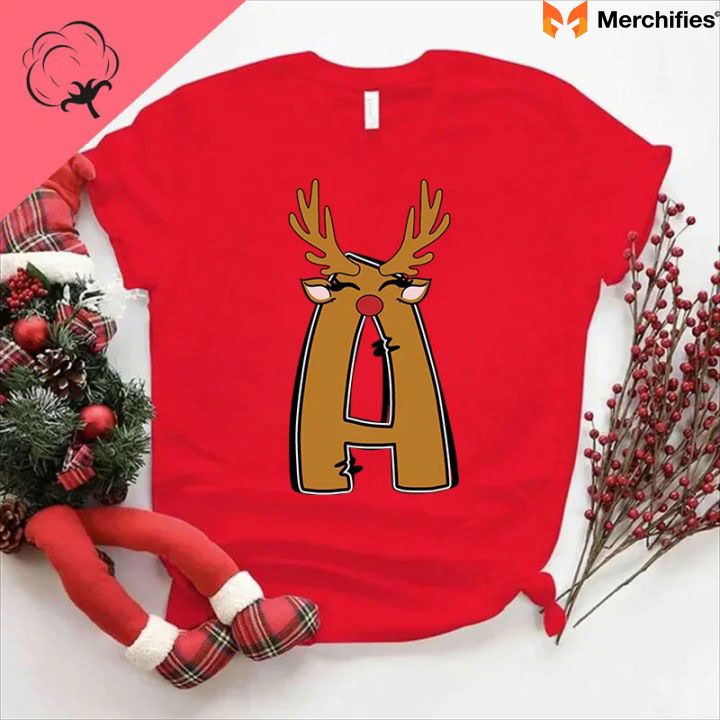
Dr. Sarah Rodriguez, who studies nostalgia and memory, explained Christmas shirts' role in cognitive processing: "Nostalgia is a powerful emotion with mental health benefits when experienced in moderation. It can increase feelings of social connectedness, meaning in life, and optimism about the future. Christmas shirts trigger nostalgic memories—you remember wearing similar shirts as a child, or you recreate positive family traditions. Those memory activations genuinely boost mood and wellbeing."
She added, "There's interesting research on 'anticipatory nostalgia'—nostalgia for the present moment, knowing it will become a memory. When families take Christmas photos in matching shirts, they're consciously creating future memories. That intentionality around memory-making is psychologically healthy. It demonstrates awareness that these moments are precious and finite."
Fashion Designers and Industry Professionals
Maria Gonzalez, an independent designer who creates Christmas shirts for boutique market, described her creative process: "I start by identifying emotional needs that aren't being met by mainstream designs. Maybe it's blended families wanting shirts that acknowledge their unique structure. Or LGBTQ+ couples seeking representation in Christmas fashion. I design for underserved niches where people want to see themselves reflected."
She discussed quality considerations: "Fast fashion has trained consumers to expect cheap Christmas shirts, but those shirts look worn after a couple washes. I use premium materials and printing methods, positioning my shirts as multi-year investments. It's a different business model—lower volume, higher margins, and hopefully less waste. My customers aren't buying new shirts every year. They're building a collection over time."
David Park, who works in trend forecasting for a major retailer, explained commercial decision-making: "We analyze social media extensively, tracking which Christmas shirt designs get high engagement. Memes that go viral in October often appear on shirts in our stores by November. The feedback loop from culture to commerce has never been faster. Sometimes I feel like we're not leading trends but frantically following them, trying to give customers what they're already showing us they want."

He acknowledged ethical concerns: "Everyone in the industry knows fast fashion is environmentally problematic. But consumers still want cheap shirts, and our business model requires high volume. The sustainable pivot is happening, but slowly. It's frustrating because we understand the problem but feel locked into systems that resist change."
These expert perspectives illuminate different dimensions of Christmas shirt culture. Fashion historians provide historical context. Anthropologists analyze social functions. Psychologists explain emotional resonance. Industry professionals reveal commercial realities. Together, they paint a comprehensive picture of why Christmas shirts matter beyond simple fashion choice.
Personal Stories: Real People and Their Christmas Shirts
Statistics and expert analysis tell part of the story, but the history of Christmas shirts truly comes alive through individual experiences. Here are real stories from people whose lives intersect with this cultural phenomenon.
The Grandmother's Legacy
Susan, 52, inherited her grandmother's Christmas sweater collection when she passed away in 2018. "Grandma Eleanor made Christmas magical. Every holiday, she wore these elaborate hand-knit Christmas sweaters that she'd made herself—enormous reindeer, Christmas trees with actual bells sewn on, snowflakes covering every inch. We thought they were embarrassing when we were teenagers. Now I treasure them."
Susan continues: "The sweaters don't fit me perfectly—Grandma was taller and broader. But I wear one every Christmas anyway. When I put it on, I can almost smell her perfume, hear her laugh. My kids, who never met her, know their great-grandmother through these sweaters and the stories I tell while wearing them. That's powerful."
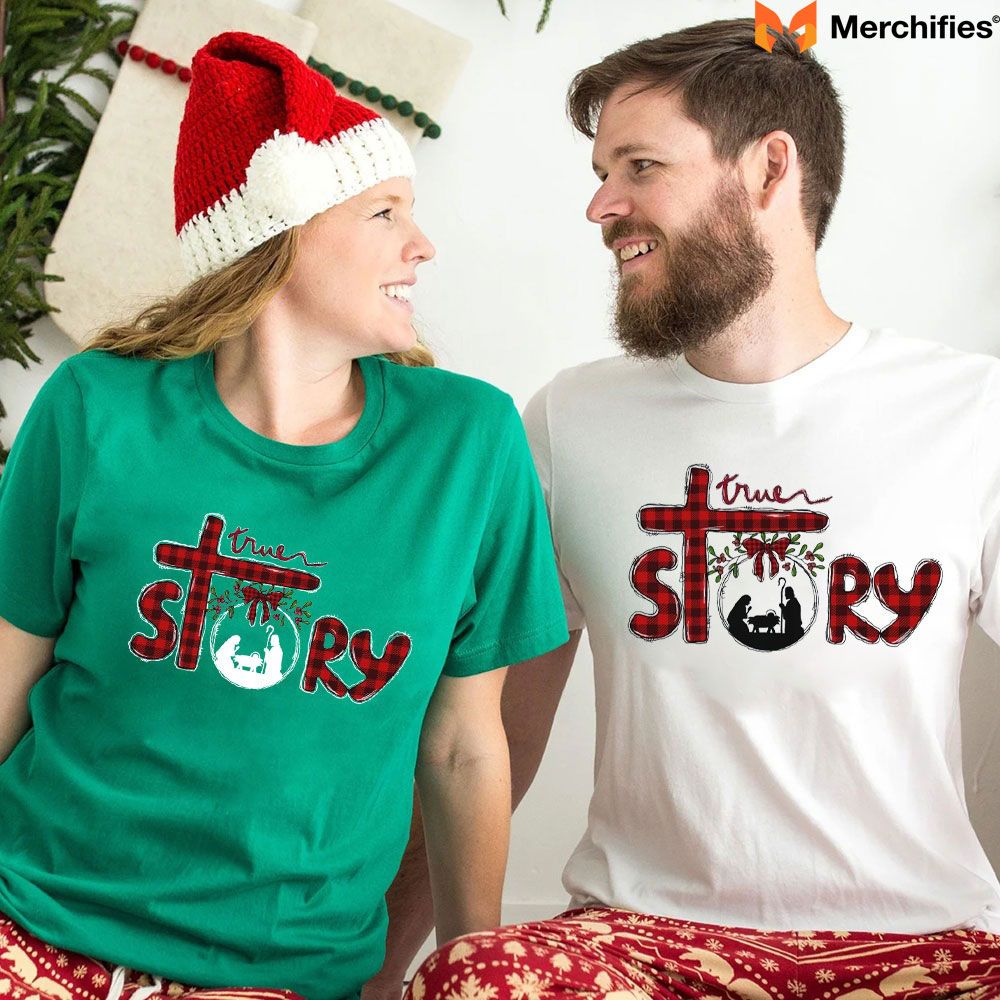
She keeps the sweaters in acid-free storage boxes between Decembers. "They're fragile now—the yarn is thinning in places. Eventually, they'll be too delicate to wear. I'm already thinking about how to preserve them, maybe frame one or create a quilt from pieces of several. These aren't just sweaters. They're family heirlooms that carry memory and love."
Susan's story illustrates how Christmas shirts transcend material objects to become memory vessels. The origin of holiday shirts may be commercial, but their meaning becomes deeply personal through use and association.
The Military Family's Connection
James and Rebecca's family has maintained Christmas shirt traditions through three deployments. "When James deployed to Afghanistan in 2011, our daughter was three," Rebecca explains. "Christmas was devastating—she didn't understand why Daddy wasn't home. We took a family photo with her wearing a shirt that said 'Santa, please bring Daddy home.' We sent that photo to James, and he kept it taped inside his locker the entire deployment."
The family now owns multiple deployment-related Christmas shirts: "Coming home" shirts for reunion Christmases, "Deployed for the holidays" shirts for years apart, and "All together" shirts for years when the family is intact. These shirts document military service's impact on family life.
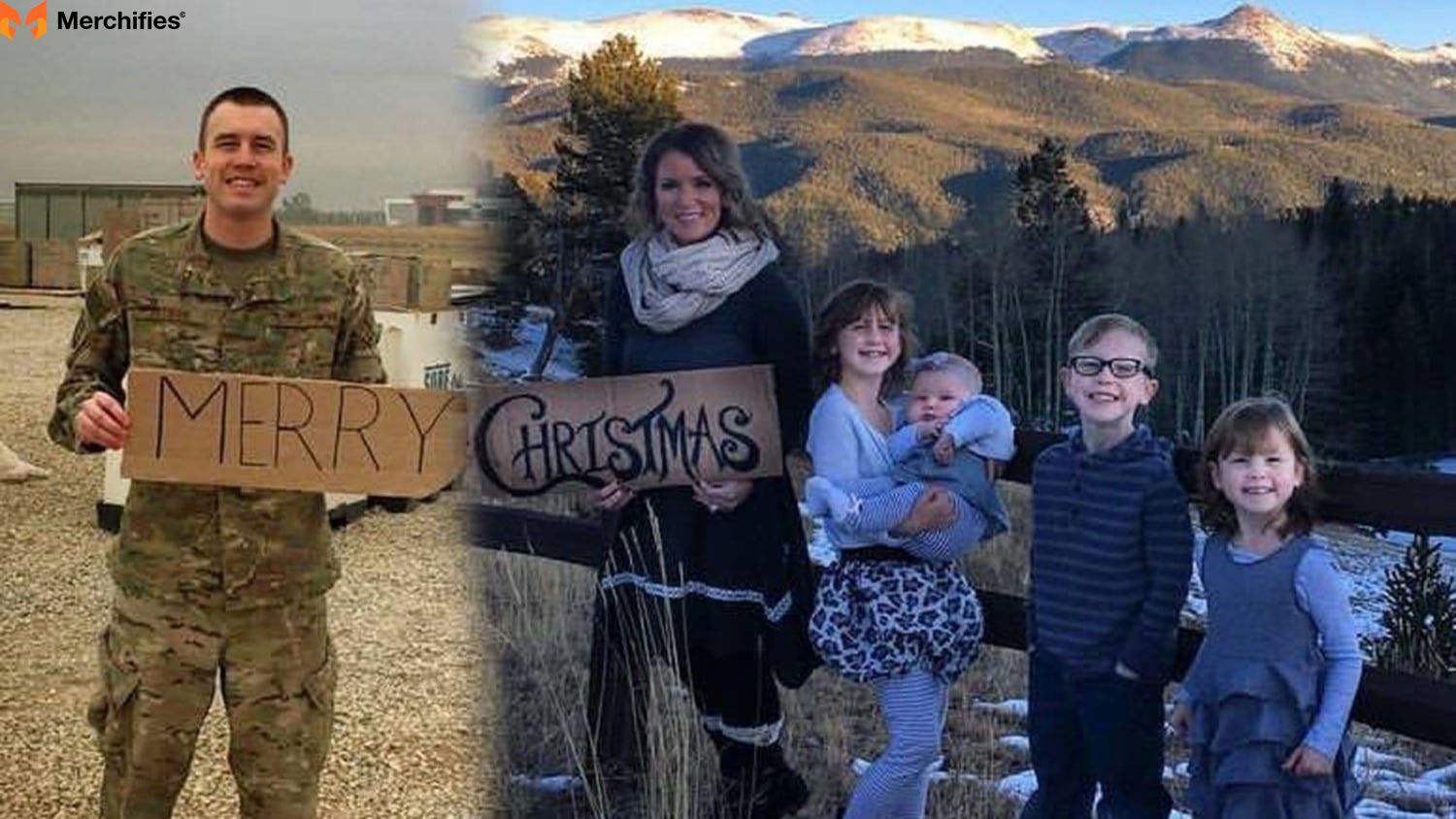
"Other military families understand immediately when they see certain Christmas shirts," James says. "There's a whole subculture of military Christmas fashion that civilian people don't even know exists. It's how we signal shared experiences without having to explain."
Their daughter, now fifteen, plans to wear her deployment Christmas shirts when she has her own children someday. "These shirts are part of my childhood," she says. "They remind me of hard times, but also that we survived them together. That's worth remembering."
The Cancer Survivor's Celebration
Donna beat breast cancer in 2019 after eighteen months of treatment. Her first post-cancer Christmas was particularly meaningful. "I bought a ridiculous Christmas shirt that said 'Good times and tan lines' with Santa on a beach. It had nothing to do with cancer, which was exactly the point. For a year and a half, everything was about being sick. That Christmas, I wanted to just be a person celebrating a holiday."
Her friends threw a Christmas party where everyone wore their most outrageous shirts in Donna's honor. "Seeing everyone dressed ridiculously, celebrating being alive and together—I cried happy tears. That party represented survival and friendship and joy after such darkness."
Donna now collects Christmas shirts that celebrate life rather than referencing her illness. "Some cancer survivors wear shirts that say 'I beat cancer' or reference their journey. I respect that, but it's not my style. My Christmas shirts are about moving forward, not looking back."
She paused, then added: "Although I did buy one shirt that says 'Survivor' in Christmas lights. I wear it on my cancer anniversary, which happens to be in December. That one day, I acknowledge what I went through. The rest of the month, I'm just a woman who really, really likes Christmas shirts."
The Blended Family's Bridge
When Marcus and Jennifer married, they each brought children from previous marriages—his two boys and her daughter. Creating a sense of family unity challenged everyone. "My boys resented Jennifer and her daughter," Marcus admits. "They saw them as replacements for their mother. Jennifer's daughter felt like she was losing her mom's attention. It was tough."
Their therapist suggested creating new family traditions that no one had history with. "We decided on matching Christmas shirts," Jennifer explains. "No one had done that in their previous families, so it was neutral ground. The first year, the kids hated the idea. But we bought the shirts anyway—Santa and his elves, with us as Santa and the kids as elves."
The first Christmas photo in matching shirts looks forced. "Nobody's smiling genuinely," Marcus laughs. "But we framed it anyway and put it on the wall. Then we did it again the next year. And the next."
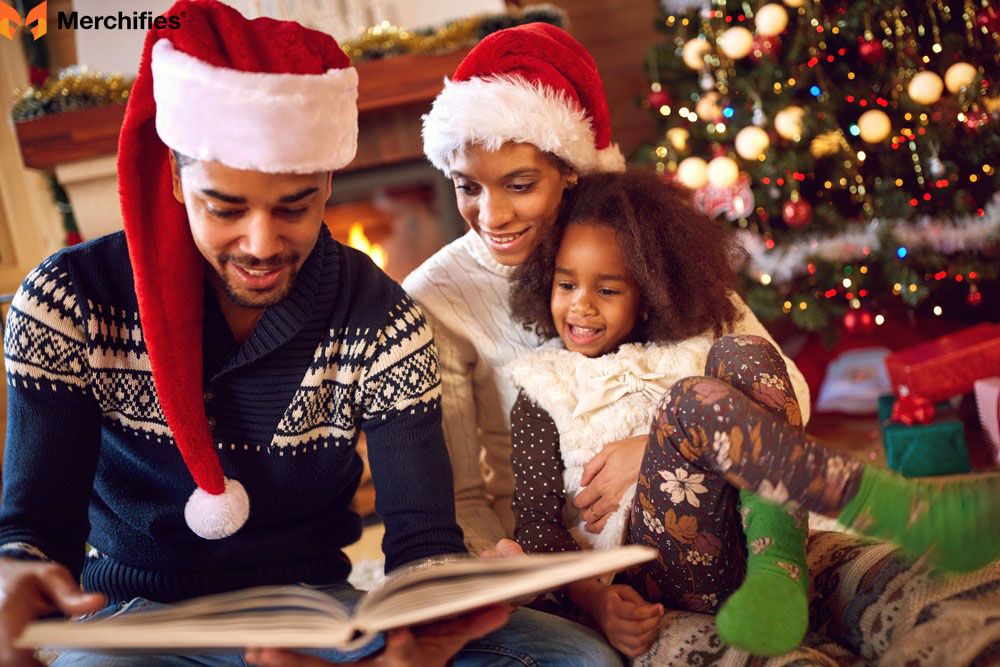
By the fourth year, the tradition had taken hold. "The kids actually reminded us it was time to pick this year's shirts," Jennifer says. "They wanted input on the design. That's when I knew we'd created something meaningful."
Now eight years into their blended family, the annual Christmas shirt photos document their journey. "You can see the relationship evolution," Marcus says. "That first awkward photo, then gradual warming, and now genuine connection. We're a real family, and those shirts helped us get there."
Their now-adult children still participate. "Even when they're away at college, they ask for their Christmas shirts to be mailed to them," Jennifer smiles. "They wear them on Christmas Day and send photos to the family group chat. Something that started as slightly desperate attempt to build unity has become genuine tradition they value."
The Small Business Dream
Karen started designing Christmas shirts from her spare bedroom in 2015. "I was a high school art teacher frustrated with corporate Christmas shirt designs I found in stores. Everything was either too cutesy or too crude. I wanted sophisticated, artistic Christmas designs."
She taught herself graphic design software, invested in heat press equipment, and started small. "My first year, I made about $500 profit—barely enough to cover materials. But I loved the creative process. Teachers would wear my designs to school, students would compliment them, and I'd hand out business cards."
Social media changed everything. "I started an Instagram account showing my design process and finished shirts. People loved seeing behind the scenes. My following grew organically. By year three, I was making more from Christmas shirts than from teaching."
Karen quit teaching in 2019 to focus on her Christmas shirt business full-time. "It was terrifying and exhilarating. My business now employs four people—all work-from-home parents like me. We do everything: designing, printing, shipping, customer service."
The seasonal nature creates challenges. "I make 80% of annual revenue between October and December. The rest of the year, I'm designing next year's collection, building social media presence, and honestly stressing about whether people will still want my shirts."
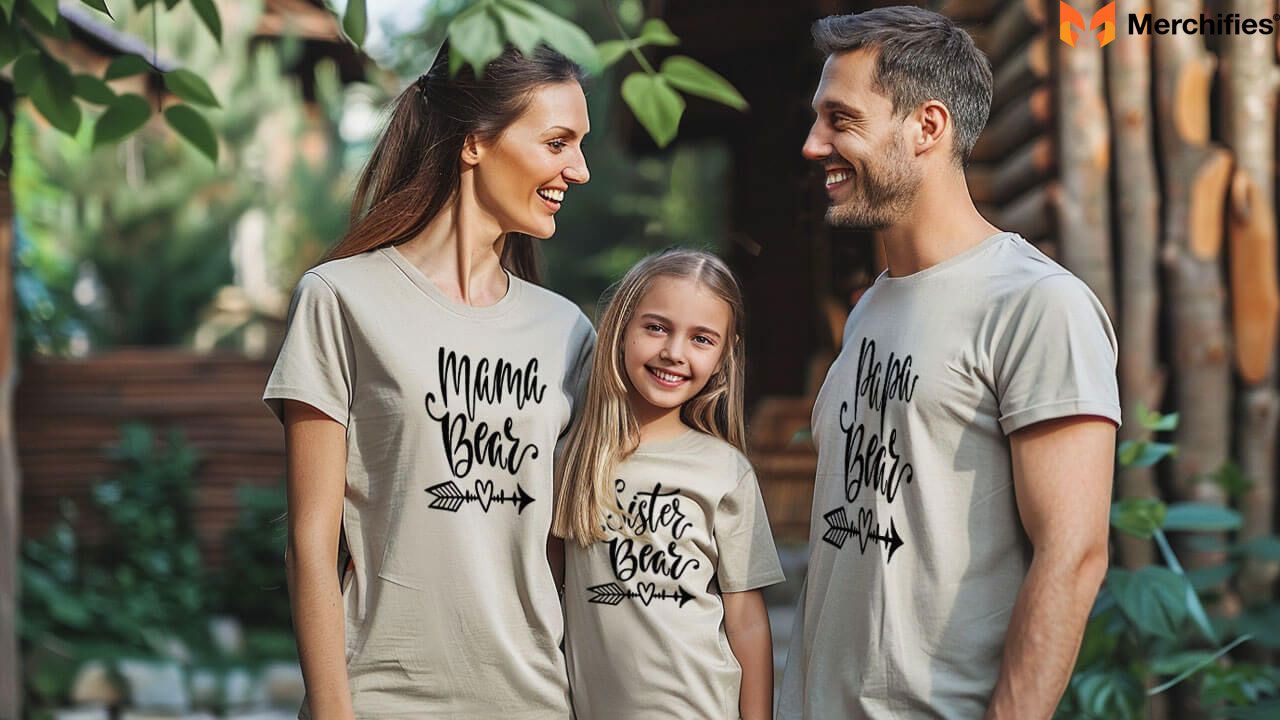
But she finds deep satisfaction in the work. "I receive photos from customers wearing my designs with their families. I see my shirts in Christmas card photos. People tell me my designs helped them feel represented—teachers, nurses, librarians, whatever their profession. I'm contributing to people's Christmas memories, which sounds grandiose but feels true."
Karen's story represents thousands of small business owners who built enterprises around Christmas shirts. The origin of holiday shirts as mass-market commodities created opportunities for independent designers to serve niches that major retailers ignored.
These personal stories reveal that Christmas shirts, despite their commercial origins and sometimes silly designs, carry genuine meaning. They mark milestones, strengthen relationships, celebrate survival, and connect people across distance. Understanding the history of Christmas shirts requires hearing these human stories alongside industry data and cultural analysis.
The Future of Christmas Shirts
What lies ahead in the continuing evolution of the origin of holiday shirts? Several trends and technologies suggest where Christmas fashion might go, though predicting culture is always uncertain.
Emerging Technologies
Smart fabrics with embedded electronics will create Christmas shirts that genuinely interact with wearers and environment. Imagine a Christmas shirt that plays music when someone hugs you, or displays different patterns based on temperature. These technologies exist in experimental forms and will become commercially viable in coming years.
Color-changing materials responsive to heat, light, or electrical current could transform Christmas shirts from static designs to dynamic displays. A shirt might show Santa and reindeer during day, then switch to nighttime winter scene as temperature drops. These materials are currently expensive but will democratize as production scales.
Augmented reality integration beyond simple QR codes will create immersive experiences. Specialized apps could scan Christmas shirts and overlay animated elements visible through phone screens—Santa's sleigh flying across the design, snowfall surrounding the wearer, whatever designers imagine. This bridges physical and digital fashion in novel ways.
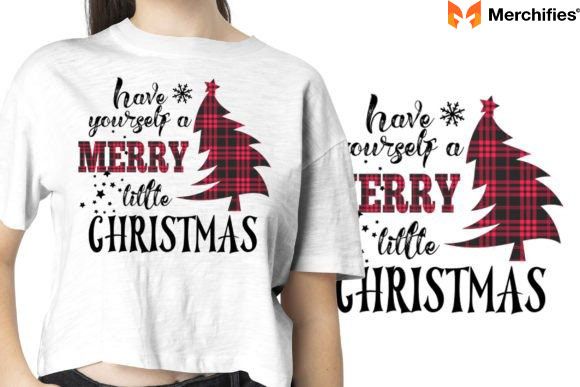
Biodegradable textiles will address sustainability concerns. Scientists are developing fabrics that decompose quickly and safely when discarded, avoiding the centuries-long persistence of current synthetic materials. Christmas shirts made from these materials would allow guilt-free seasonal fashion without environmental burden.
On-demand local manufacturing through advanced 3D knitting machines could revolutionize production. Instead of shipping Christmas shirts globally, designs might be transmitted digitally to local facilities that produce them on demand. This reduces shipping emissions while enabling perfect customization—shirts made to exact measurements and specifications.
Haptic feedback fabrics that create subtle sensations through embedded actuators could add touch dimension to Christmas shirts. Imagine a snowflake design where you can feel gentle tingling sensations like actual snowfall. These technologies remain experimental but show intriguing possibilities.
Design Trends to Watch
Hyper-personalization will advance beyond simply adding names. AI-powered design tools will create unique Christmas shirts based on individual preferences, family history, and aesthetic sensibilities. Each shirt becomes truly one-of-a-kind rather than mass-produced design with name added.
Nostalgic revivals will continue cycling through decades. Having thoroughly mined the 1980s and 90s, designers are beginning to reference Y2K era (late 90s/early 2000s) aesthetics. Eventually, 2010s nostalgia will emerge. Each generation discovers previous decades' Christmas fashion and reinterprets it.
Genre mashups combining Christmas with unlikely categories will proliferate. Horror-Christmas shirts have grown popular (Krampus, Nightmare Before Christmas themes). Sci-fi Christmas, steampunk Christmas, cottagecore Christmas—any aesthetic subculture will get holiday versions. The specificity of niche interests will intensify.
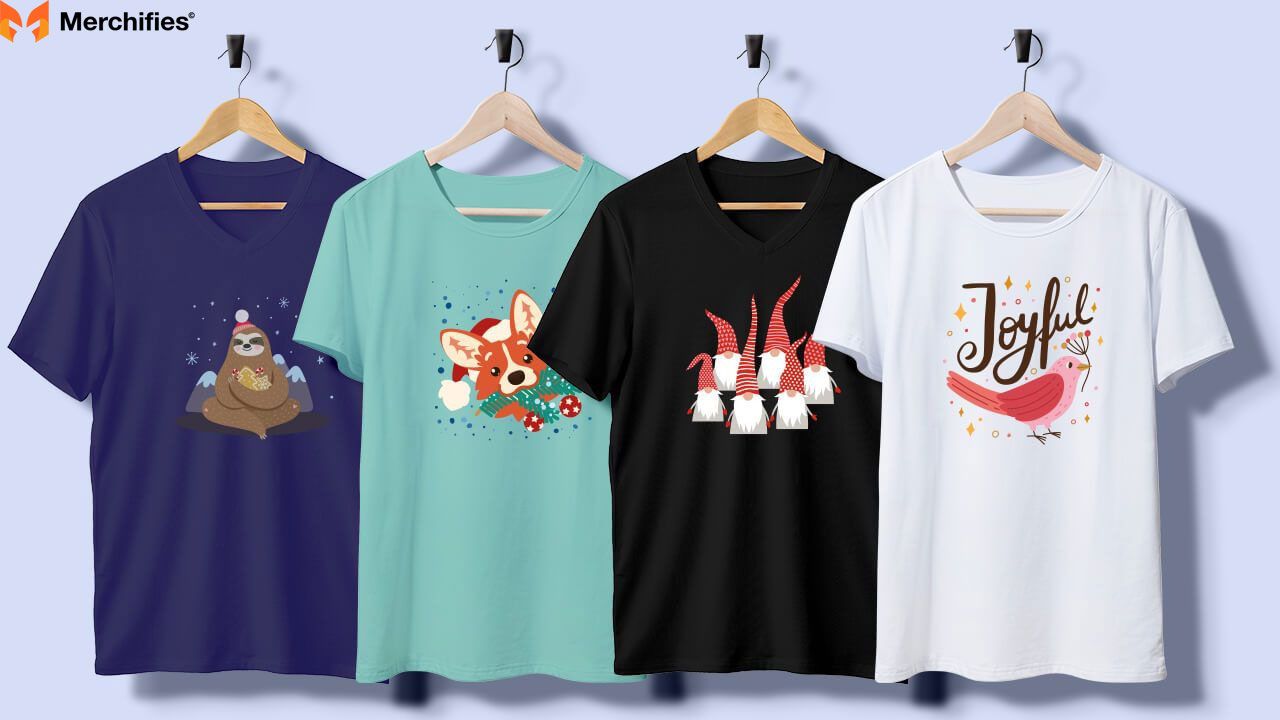
Interactive community designs where multiple people contribute to evolving Christmas shirt artwork could emerge through blockchain and NFT technologies. Imagine a Christmas shirt design that changes based on community voting, with each version being documented and tradable. This merges fashion with participatory digital culture.
Wellness-integrated fashion combining Christmas aesthetics with health monitoring could appeal to fitness-conscious consumers. Christmas shirts with embedded sensors tracking heart rate, steps, or stress levels merge celebration with self-care. This aligns with broader trends toward quantified-self technology.
Minimalist reactions against visual chaos will grow as counter-trend. After decades of increasingly busy Christmas shirt designs, some consumers crave simplicity. Elegant, understated holiday shirts with subtle nods to Christmas will serve this market.
Cultural Predictions
Increased diversity in Christmas shirt designs will continue reflecting America's multicultural reality. More interfaith designs, more representation of non-nuclear family structures, more acknowledgment that "Christmas" means different things to different people. The dominant culture Christmas shirt won't disappear, but alternatives will be readily available.
Year-round Christmas fashion for true enthusiasts will grow beyond current niche. People who keep Christmas decorations up all year want Christmas shirts to match. A small but dedicated market exists for those who reject the seasonal limitation, wanting Christmas every day. This remains subcultural but could expand.
Virtual fashion for digital spaces will become significant as metaverse and virtual worlds mature. Digital Christmas shirts for avatars in online environments, gaming spaces, and virtual gatherings will constitute separate market from physical clothes. Some people might spend more on virtual Christmas fashion than physical shirts.
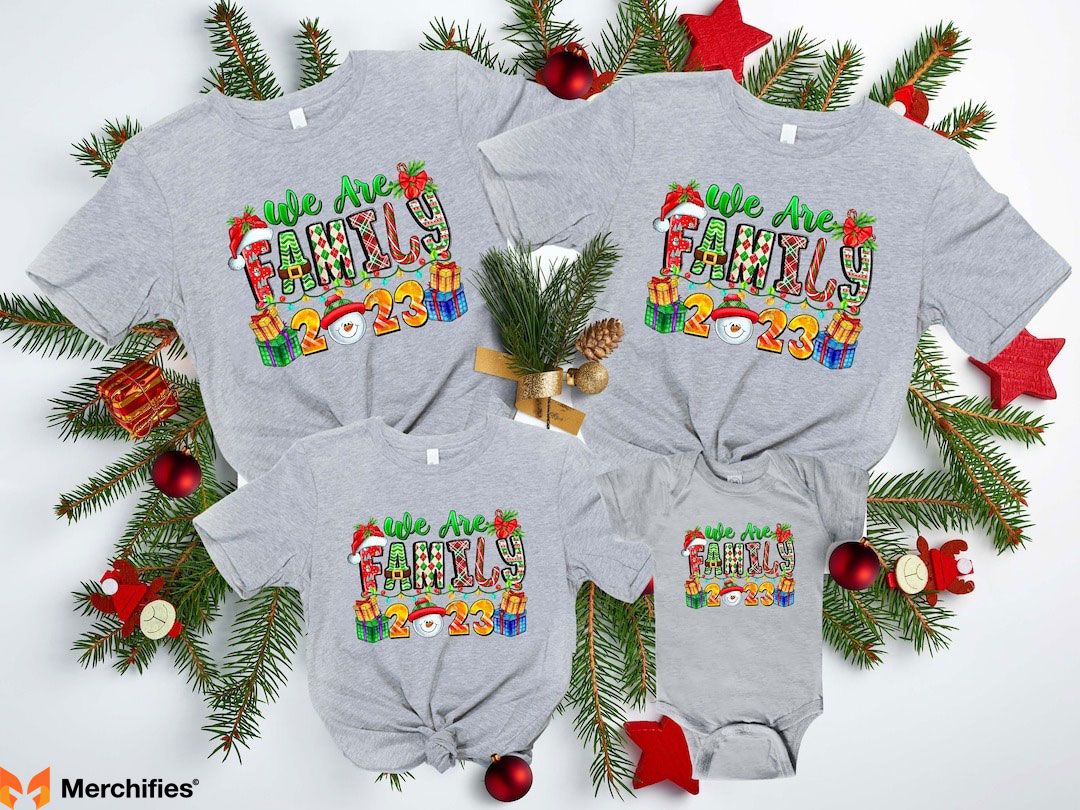
Return to formality? Some trend watchers predict pendulum swinging back toward dressing up for Christmas after decades of casualization. Younger generations rejecting their parents' casual approach might rediscover the special feeling of formal holiday attire. This could coexist with Christmas shirt culture rather than replacing it—different contexts demanding different approaches.
Seasonal subscription services will grow, providing curated Christmas shirts delivered annually. Subscribers receive new designs each year without shopping, with old shirts recycled through company's circular fashion program. This combines convenience with sustainability while ensuring reliable revenue for businesses.
AI-designed Christmas shirts created entirely by artificial intelligence will challenge notions of creativity and design. As AI image generation improves, algorithms will create countless Christmas designs without human designers. Some will embrace this; others will seek "human-designed" as premium authenticity marker.
Climate change impacts will influence Christmas fashion as weather patterns shift. If December temperatures continue rising in many regions, heavy Christmas sweaters become impractical. Design adaptation to warmer Christmas seasons might drive innovation in lightweight, breathable holiday fabrics.
The future history of Christmas shirts will be written by technological capabilities, environmental imperatives, and cultural values that are still emerging. What seems certain is that Christmas shirts will continue evolving, reflecting whatever American culture becomes in decades ahead. The tradition of marking December holidays with special clothing appears durable, even as specific expressions transform.
Creating Your Own Christmas Shirt Legacy
Whether you're a Christmas shirt enthusiast or casual participant, thoughtful approaches enhance meaning while minimizing waste. Here's how to build a personal Christmas shirt tradition that aligns with your values.
Finding Your Style
Identify your Christmas aesthetic. Are you traditional or ironic? Religious or secular? Cute or edgy? Understanding your personal style helps you choose Christmas shirts you'll actually wear repeatedly rather than impulse purchases that stay in drawers.
Consider which Christmas imagery resonates with you. If you're genuinely enthusiastic about Santa, embrace it fully. If you're more winter-solstice-pagan-roots person, look for nature-based designs. Authenticity matters more than following trends.
Quality versus quantity decisions shape your Christmas shirt relationship. Fast fashion makes buying numerous cheap Christmas shirts tempting. But two well-made shirts worn many years generate less waste and likely more satisfaction than twenty disposable ones worn once.

Examine construction quality when shopping. Check seam stitching, fabric weight, and print durability. Higher-quality Christmas shirts cost more initially but survive repeated washing better. If you'll realistically wear something five or ten years, the per-wear cost drops dramatically.
Building a collection over time creates Christmas wardrobe diversity without excess. Instead of buying multiple shirts each year, acquire one meaningful piece annually. Over a decade, you'll have ten Christmas shirts with individual significance rather than forgettable bulk purchases.
Mark acquisitions somehow—maybe a photo album showing you in each new Christmas shirt the year you bought it. This documents your evolving style and life circumstances. That 2020 pandemic Christmas shirt tells a story. So does the shirt from the year you got married, had a baby, or survived personal challenges.
DIY Options for Personal Expression
Iron-on transfers offer the simplest DIY Christmas shirt creation. Buy blank shirts and print designs on transfer paper using home printers. This works best on light-colored cotton shirts. The results aren't professionally durable but suffice for occasional wear.
Modern transfer paper has improved significantly from the stiff, cracking versions of past decades. Look for stretch transfer paper that moves with fabric. Follow temperature and time instructions precisely for best adhesion.
Fabric paint and markers let you hand-create Christmas designs. This appeals if you enjoy crafting and want genuinely unique shirts. Fabric paint remains flexible when dry and survives washing if heat-set properly.
Simple designs work best for non-artists. Hand-print lettering, geometric Christmas trees, or abstract winter patterns are manageable without advanced art skills. Involve children in this process—their imperfect designs become treasured keepsakes.
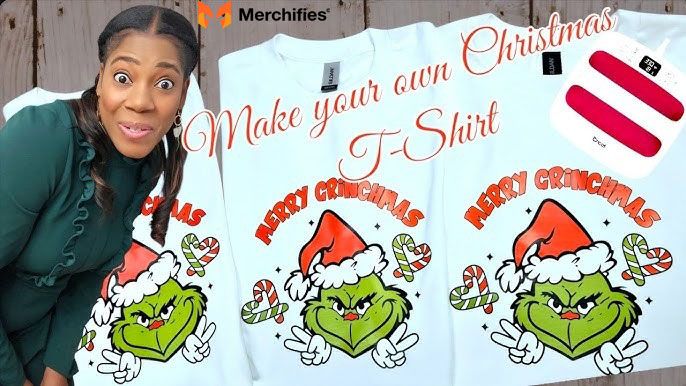
Embellishment additions transform plain shirts into festive ones. Sew or glue on sequins, buttons, ribbons, pom-poms, jingle bells, or any craft store Christmas items. This technique works particularly well for ugly Christmas sweater creation when you want to control the exact level of outrageousness.
Upcycling old shirts gives new life to clothes you'd otherwise discard. That plain red t-shirt becomes a Christmas shirt with added snowflake stenciling. A green sweatshirt transforms with iron-on Christmas tree design. Upcycling reduces waste while creating custom pieces.
Thrift stores provide cheap base shirts for DIY projects. That slightly-worn shirt for two dollars becomes a canvas for your creativity. If your attempt fails, you're out minimal money.
Starting Family Traditions
Annual matching shirt photos document family growth and change. Choose consistent location and timing—maybe Christmas morning before opening presents, or December 1st when you put up decorations. Years of these photos create moving visual history.
Make the photo-taking ritual special itself. Play Christmas music, serve hot chocolate, make it an event rather than rushed obligation. Children remember the process as much as the result.
Design contests within families turn Christmas shirt selection into engaging activity. Family members each propose designs, then vote. The winning design becomes next year's shirt. This gives everyone ownership in tradition while teaching compromise.
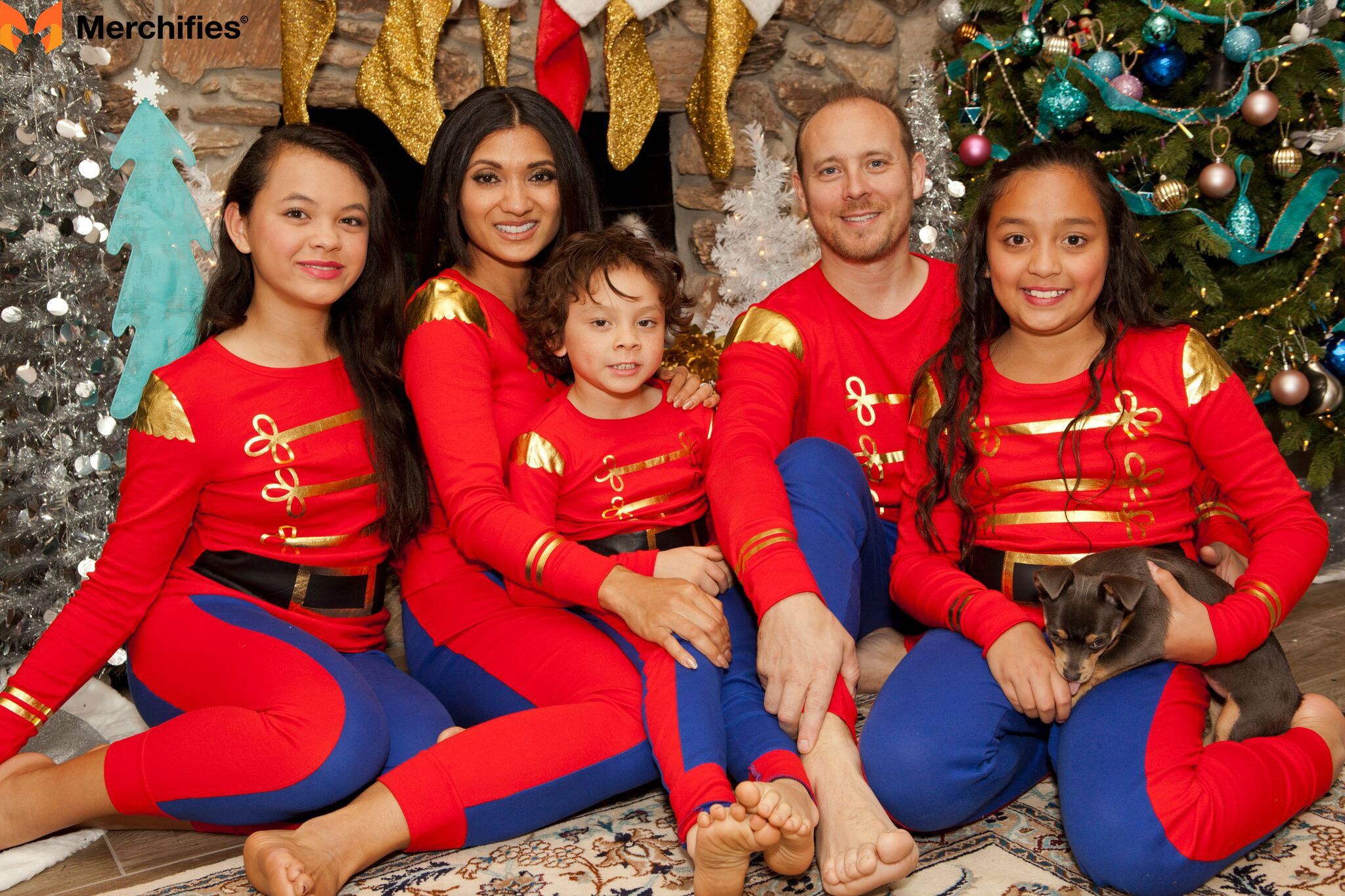
Allow children increasing input as they age. Young kids might just choose between two pre-selected options. Teenagers could design the entire shirt using online tools. By adulthood, they might take over organizing the tradition entirely.
Passing down vintage pieces creates tangible inheritance. When children leave home, give them childhood Christmas shirts they wore in old photos. These connections to early years become increasingly meaningful as adults.
One family I know gives each child their entire collection of Christmas shirts when they turn eighteen. "Here's every Christmas from your birth until now," the parents say. "Your history in a box." That gesture communicates love and continuity powerfully.
Making Meaningful Choices
Support ethical brands by researching Christmas shirt companies' labor and environmental practices. Certifications like Fair Trade, GOTS (Global Organic Textile Standard), and B Corporation status indicate commitment to standards beyond profit.
Prioritize transparency. Companies willing to disclose manufacturing locations and practices demonstrate accountability. Those hiding supply chain information might have concerning practices.
Choose sustainable options when possible. Organic cotton, recycled materials, and low-impact dyes reduce environmental damage. These choices cost more but align spending with environmental values.
Consider longevity in purchasing decisions. A $60 Christmas shirt you wear ten years is more sustainable than three $20 shirts you wear once each. Cost-per-wear matters more than initial price.
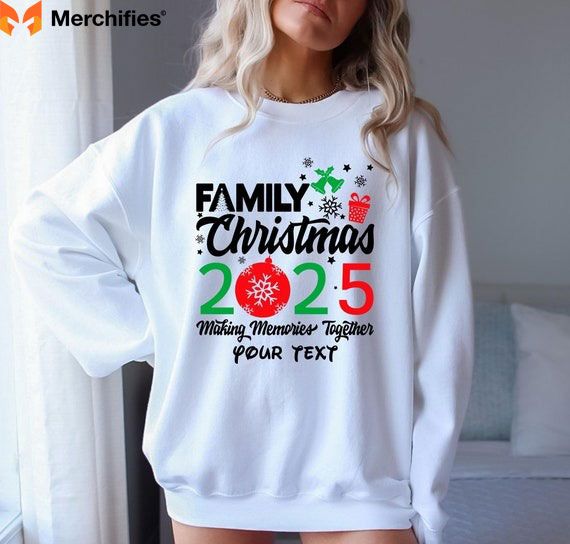
Buy local when possible to reduce shipping emissions and support community businesses. Local screen printers, craft fairs, and boutiques offer Christmas shirts while keeping money in your economy.
Rent instead of buying through subscription services or one-time rentals for Christmas shirts you'll wear once to specific events. This dramatically reduces consumption while providing variety.
Shop secondhand first. Before buying new Christmas shirts, check thrift stores, consignment shops, Poshmark, ThredUp, and eBay. You might find exactly what you want for a fraction of new cost while extending existing garments' useful life.
The history of Christmas shirts doesn't have to be wasteful. Intentional choices about acquisition, care, and eventual disposal can make Christmas fashion both personally meaningful and environmentally responsible.
Frequently Asked Questions About Christmas Shirts
Q: When were Christmas shirts first invented?
Christmas shirts as we know them today—casual, humorous, mass-produced holiday apparel—emerged in the 1980s. However, the origin of holiday shirts traces much further back. Victorians in the 1800s wore special holiday attire, just formal dresses and suits rather than t-shirts. The specific commercial Christmas t-shirt phenomenon began appearing in mall kiosks around 1985-1987, with designs featuring simple graphics like Santa faces or candy canes. The "ugly Christmas sweater" as intentional fashion statement gained traction in the 1990s, though those sweaters existed as genuinely unfashionable garments since the 1950s. So the complete history of Christmas shirts spans over a century of evolving holiday fashion, but the modern t-shirt version is only about forty years old.
Q: Why do people wear ugly Christmas sweaters?
The ugly Christmas sweater trend combines several psychological and cultural factors. Originally, people wore these sweaters because grandmothers knitted them as gifts—you wore them out of obligation, not fashion sense. By the 1990s and especially 2000s, ironic appreciation emerged. Wearing something deliberately ugly became funny, a form of anti-fashion that rejected mainstream style rules. Psychologists note that playfulness benefits adult mental health, and ugly Christmas sweaters provide socially sanctioned permission to be ridiculous. They also create belonging through shared experience—when everyone at a party wears outrageous sweaters, hierarchies temporarily dissolve and community forms. The contest element (who has the ugliest sweater?) adds competitive fun. Essentially, ugly Christmas sweaters let adults play, bond, and signal that they don't take themselves too seriously.
Q: What are the most popular Christmas shirt designs?
Current Christmas fashion trends favor several design categories. Traditional motifs remain popular: Santa Claus, reindeer, snowflakes, Christmas trees, and candy canes never go out of style. Humorous phrase shirts continue strong—plays on words like "Sleigh My Name" or "Jingle Juice" sell well. Pop culture references featuring characters from movies, TV shows, or memes generate consistent interest. Occupation-specific designs (teacher Christmas shirts, nurse Christmas shirts) serve professional communities. Family matching shirts for coordinated photos drive significant sales. Vintage-inspired designs mimicking 1960s-1990s aesthetics appeal to nostalgia. Inclusive designs acknowledging diverse holidays (Hanukkah, Kwanzaa) and family structures have grown dramatically. The most popular Christmas shirts balance festive recognition with personal identity expression, letting wearers celebrate holidays while showing personality.

Q: How has social media changed Christmas fashion?
Social media fundamentally transformed Christmas shirt culture in multiple ways. First, it made Christmas outfits public rather than private. Your Christmas shirt isn't just for family anymore—it's content for Instagram, Facebook, Pinterest. This visibility created pressure for increasingly creative, unique, and photogenic holiday fashion. Second, social media enabled rapid trend cycling. Designs that go viral on TikTok appear as merchandise within days. Third, influencers became Christmas fashion tastemakers, with their recommendations driving sales for specific brands and styles. Fourth, hashtags organized and amplified Christmas fashion communities, letting people find inspiration globally. Fifth, user-generated content became marketing tool—companies encourage customers to post photos in their Christmas shirts, providing authentic testimonials. Sixth, social media democratized design, allowing independent creators to reach audiences without traditional retail channels. The history of Christmas shirts accelerated dramatically once social media provided instant distribution and feedback mechanisms.
Q: Are Christmas shirts only an American thing?
No, though American Christmas shirt culture is particularly intense. The origin of holiday shirts as commercial casual wear is largely American, but the practice has spread globally with varying adoption. The UK has strong Christmas jumper (sweater) culture, including annual Charity Christmas Jumper Day where people wear festive sweaters and donate to causes. Australia has adapted Christmas shirts to summer weather with designs featuring beach themes and lightweight fabrics. Japan has embraced Christmas fashion as trendy despite minimal Christian population, treating it as stylish Western cultural import rather than religious holiday. Many European countries maintain more formal Christmas traditions but have gradually adopted casual Christmas fashion, especially among younger generations. However, the specifically American enthusiasm—multiple Christmas shirts per person, elaborate ugly sweater parties, matching family sets—remains distinctive. Global Christmas fashion trends reflect American influence while adapting to local cultures, climates, and traditions.
Q: What's the environmental impact of Christmas shirts?
Christmas shirts pose several environmental challenges characteristic of fashion industry generally. Textile production consumes enormous water—cotton requires irrigation, and dyeing fabrics pollutes waterways with chemicals. Manufacturing generates greenhouse gases contributing to climate change. Synthetic fabrics (polyester, acrylic) are petroleum-based and shed microplastics during washing that enter oceans. The disposable nature of fast fashion Christmas shirts—worn a few times then discarded—maximizes waste. Most textile waste goes to landfills where synthetic fabrics persist for centuries. International shipping from overseas factories to American stores adds transportation emissions. However, sustainable alternatives exist: organic cotton Christmas shirts avoid pesticides; recycled materials divert waste; buying secondhand extends garment lifespan; choosing quality over quantity reduces overall consumption; rental services maximize utility. The environmental impact depends largely on purchasing choices, care practices, and disposal methods. Conscious consumers can participate in Christmas fashion while minimizing harm.
Q: How much does the average American spend on Christmas clothing?
Americans' Christmas clothing spending varies widely by income, family size, and personal priorities. Industry estimates suggest the average American spends $50-$150 on holiday apparel annually, including Christmas shirts, party outfits, and accessories. Families with children spend more, often purchasing matching Christmas shirts for everyone plus individual pieces. The ugly Christmas sweater market alone generates approximately $1.2-$1.7 billion in annual sales. Major retailers report that holiday apparel accounts for 15-20% of their annual clothing revenue despite representing only about two months of sales. Younger adults (18-35) tend to spend more on Christmas fashion than older generations, partly due to social media influence and party attendance. Regional variations exist, with urban coastal areas spending more than rural interior regions. Economic conditions significantly impact spending—during recessions, Christmas apparel purchases decline as discretionary spending tightens. Premium Christmas shirts from boutique brands can cost $60-$150, while fast fashion versions sell for $10-$30, creating vast spending range.
Q: Can you wear Christmas shirts to work?
This depends entirely on your workplace culture and dress code. Many offices have relaxed standards during December, explicitly allowing or even encouraging Christmas shirts through "festive Friday" policies or office-wide ugly sweater days. Customer-facing service industries often require or suggest holiday attire to create festive atmosphere for clients. Teachers commonly wear Christmas shirts to school, finding they enhance holiday spirit in classrooms. Healthcare workers, especially in pediatric settings, brighten environments with festive scrubs and shirts. However, some professional environments maintain formal standards year-round. Conservative corporate offices, law firms, and financial institutions might consider Christmas shirts too casual even during holidays. Creative industries like tech startups and advertising agencies typically embrace Christmas fashion enthusiastically. When uncertain, observe what others wear or ask your manager directly. For borderline situations, choose understated Christmas shirts in professional colors and minimal design rather than bright, elaborate styles. The general trend is toward greater workplace casualness, and Christmas shirts benefit from this shift while requiring contextual judgment.
Q: How do you care for Christmas shirts to make them last?
Proper care significantly extends Christmas shirt lifespan, making quality purchases worthwhile. First, read and follow care labels—some Christmas shirts require special handling. Generally, wash Christmas shirts inside-out in cold water to protect printed or embellished designs. Hot water can cause graphics to crack or fade and fabrics to shrink. Use gentle cycle and mild detergent, avoiding bleach which damages both fabric and designs. Don't overload washing machines; clothes need space to move freely. For shirts with 3D elements (pom-poms, sequins, bells), consider hand washing or using mesh laundry bags to prevent damage. Avoid fabric softener on performance fabrics or shirts with special finishes. Air drying is gentlest—lay flat or hang to dry away from direct heat. If using a dryer, choose low heat. High temperatures degrade elastic fibers and can melt synthetic materials in designs. Iron inside-out on low temperature if needed, never applying direct heat to graphics. Store Christmas shirts properly during off-season: clean them thoroughly first (stains set over time), fold rather than hang to prevent stretching, and keep in cool, dry place away from sunlight which fades colors. Cedar blocks or lavender sachets deter moths. With proper care, quality Christmas shirts last ten or more years.
Q: What will Christmas shirts look like in ten years?
Predicting fashion is uncertain, but several trends suggest future directions. Technology integration will likely increase—Christmas shirts with LED displays showing changeable patterns, fabrics that respond to environment by color-shifting, or augmented reality features visible through smartphone apps. Sustainability will become standard rather than premium, with biodegradable materials and ethical manufacturing addressing environmental concerns. Hyper-personalization through AI design tools will create truly unique Christmas shirts tailored to individual aesthetics and measurements, moving beyond adding names to mass-produced designs. The ugly Christmas sweater trend might fade as generations who remember original ugly sweaters age out, or it might persist as established tradition. Nostalgia cycles suggest 2010s Christmas fashion will be revived ironically by the 2030s, just as 1980s styles saw resurgence. Inclusive designs acknowledging diverse holidays, family structures, and identities will proliferate beyond current niche status. Virtual Christmas fashion for metaverse avatars and digital spaces might compete with or complement physical Christmas shirts. Some trend analysts predict pendulum swing back toward dressing up for Christmas after decades of casualization, which could decrease Christmas t-shirt dominance. Most likely, multiple styles will coexist—formal for some contexts, casual for others—with increased options for every preference. The fundamental tradition of marking Christmas with special clothing will likely continue regardless of specific styles.
Conclusion: Threads of Tradition
The complete history of Christmas shirts reveals far more than fashion evolution. It's a story about how Americans negotiate tradition and change, formality and comfort, individual expression and collective celebration. From Victorian velvet gowns to ironic ugly sweaters to Instagram-worthy matching family sets, Christmas fashion documents our cultural values and priorities.
The origin of holiday shirts traces to ancient human impulses: marking special occasions through appearance, signaling group belonging, and expressing identity through adornment. These fundamental needs haven't changed across millennia. What transformed is how we fulfill them—replacing formal church attire with casual Christmas t-shirts, swapping hand-sewn heirlooms for mass-produced designs, choosing humorous irreverence over solemn reverence.
Yet despite casualization and commercialization, Christmas shirts retain remarkable meaningfulness. That ratty sweater from your grandmother carries memory and love. Matching family shirts document relationships and milestones. The shirt you wore through cancer treatment represents survival. These aren't just garments—they're material culture embodying human experience.
Christmas fashion trends will continue evolving. Technology will bring innovations we can't yet imagine. Environmental imperatives will reshape production and consumption. Cultural values will shift, and Christmas shirts will reflect those changes. Perhaps future generations will look at our 2020s Christmas fashion the way we view 1980s shoulder-pad sweaters—with affectionate mockery and nostalgia.
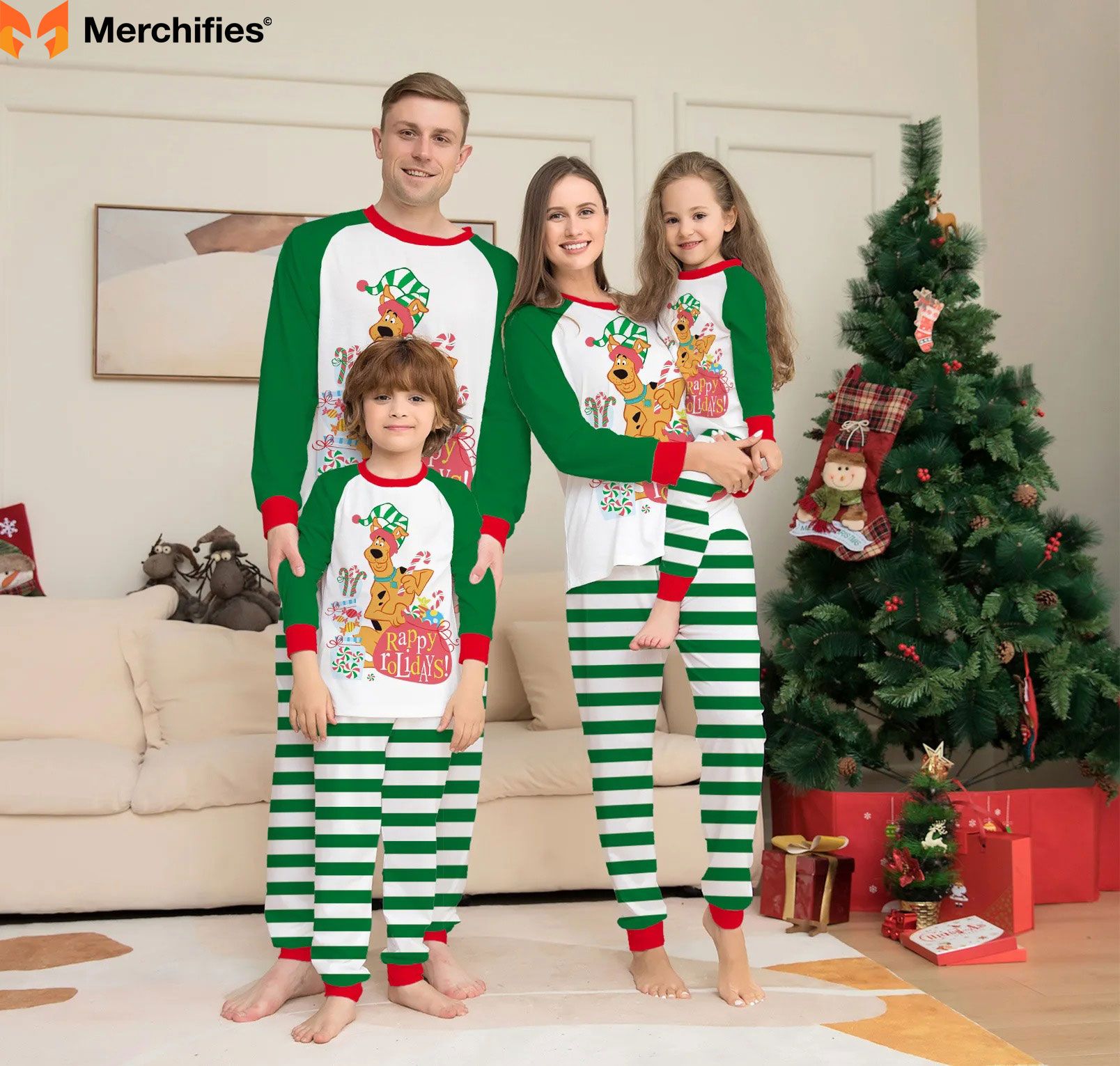
What seems certain is that Americans will continue marking December holidays with special clothing. The specific forms might change, but the impulse to dress festively for Christmas appears durable. Whether that means formal wear making a comeback, or Christmas shirts becoming even more casual, or something entirely unexpected, people will find ways to make the holidays feel special through what they wear.
The story of Christmas shirts is ultimately about us—our humor, values, creativity, and constant reinvention of tradition. Each Christmas shirt tells a story: who we are, what we celebrate, whom we love. Collectively, these stories form the colorful, sometimes ridiculous, always human tapestry of American Christmas culture.
As you wear your Christmas shirt this December—whether it's a vintage hand-knit sweater, an ugly Christmas atrocity, a sophisticated boutique design, or a simple t-shirt with Santa—you're participating in a tradition centuries old and constantly new. You're part of the ongoing history of Christmas shirts, adding your story to millions of others who've found meaning in this seemingly simple act: wearing something special to celebrate something special.
May your holidays be bright, your Christmas shirts be comfortable, and your memories be warm. After all, that's what Christmas fashion is really about—not perfection, but presence. Not expense, but intention. Not following trends, but creating traditions that matter to you and the people you love.
Merry Christmas, happy holidays, and may your closet be ever festive.